Why It’s Hard to Discuss Race At Work (and How to Make It Easier)
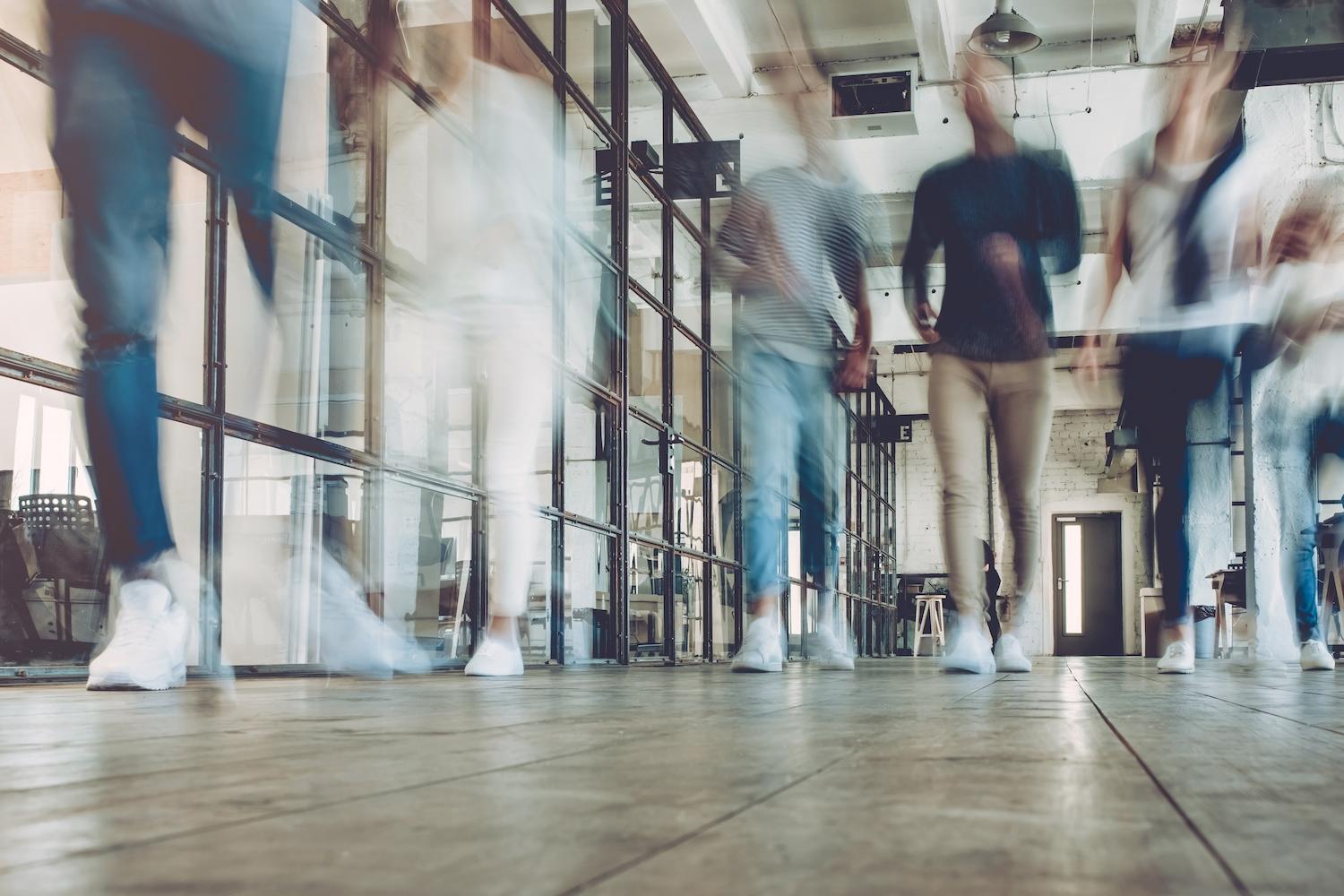

(Image credit: Vasyl/Adobe Stock)
This story about discussing race at work is part of Let's Talk About It, a guest-contributed column exploring how to navigate hard conversations and complex challenges in the workplace. If you're interested in contributing your perspective to this column, please get in touch with us here.
Many of us have been there. We’re in a workplace meeting and someone starts talking about the importance of having “uncomfortable conversations.” You don’t have to go far before stumbling into the buzz about being “authentic” and “living your truth” as part of your professional development and career advancement.
“Difficult conversations” is a jargon-y catchphrase that many leaders endorse as part of their approach to managing teams and analyzing anything from disastrous product launches to dumpster-fire company mergers. Self-aware organizations are supposed to courageously embrace candid feedback and radical truth. Well, that’s until that unvarnished truth is about race, diversity, unconscious bias, discrimination and equity.
Interest in transparent conversations involving race is often mere performative lip service.
Wading through discomfort quickly comes to a screeching halt when confronting racial biases on an individual or organizational level. And those speaking the truth are often gaslit, sidelined, experience hostility, and are eventually shown the door. These are defensive knee-jerk reactions to feeling threatened since taking an honest look at racism challenges people’s sense of self and whether they view themselves as a “good person” or “racist.”
A line from the Hollywood film "American Fiction" sums up the challenges around discussing racism. “White people think they want the truth, but they don’t. They just want to feel absolved.”
Suffering from not-here syndrome: Why white people struggle
If a company can deconstruct failed business decisions, why can’t it tackle failures in recruiting and retaining people of color? Or why it’s being sued for racial discrimination? Why there are few executives of color? Why a particular key leader has high turnover with talent of color?
Discussing race is deeply personal. Many lack basic skills and cultural intelligence to not fumble. They allow fears of being judged or an allergy to self-analysis to prompt toxic reactions. Except difficult conversations inherently involve taking an inventory of your mindset, values and decisions.
For white people to have more productive conversations where they can learn and grow, and that minimize marginalizing people of color, they must transition away from white exceptionalism (i.e., an inability to look inward and acknowledge when leaning into racism). They should expand their definition away from seeing racism only in extreme forms (e.g., hate crime perpetrators) where it always manifests elsewhere and never at home.
The benchmark for what’s racist isn’t about “hearts and mind” ideologies where we theoretically believe in racial equality. Nor is it about intentions. Intent isn’t a shield from engaging in racism. The barometer is tied to the impact of your actions and choices – including how you behave and what you say or don’t say when discussing race. People of color care less about what white people feel or intend and more about how white people treat or harm them.
You must have a growth mindset to evolve and have productive conversations about racism, bias and discrimination. You should arrive capable of managing your own feelings while accepting and admitting hard truths about yourself.
Best practices for white people: What to do
Respect is the critical starting, middle and end point in cross-racial interactions. If you can’t modulate your behavior and self-censor to avoid subjecting people of color to verbal trauma, micro-aggressions and demoralizing overt racism, then you’re not ready for substantive and meaningful interactions with people of color. Here are some things to keep in mind:
- Bring kindness, compassion, empathy, patience and civility.
- Arrive ready, willing, and able to prioritize the views and feelings of people of color above your own.
- Insist on race-centered conversations, avoiding distractions discussing gender, sexuality, class and other -isms. Focus strategically on racism, even if exploring intersectionality with race, to avoid hijacking the topic. The goal isn’t to use people of color as vehicles for other groups’ progress while ignoring the need to tackle race.
- Come willing to trust by believing what you’re told by people of color. Accept what they say is racist as a fact instead of questioning or pushing back.
- Avoid interrupting even when excited or wanting to support an idea. Avoid steamrolling and hogging up space. No one wants to speak with those seeking to hear their own voice.
- Leave your debate skills at the door. It’s a conversation, not a moot court competition. People of color shouldn’t feel attacked, challenged, worn out and depleted from spending time with you.
- Create space for people of color to share their views and feelings. If you notice others being dismissive of them or white colleagues engaging in offensive or micro-aggressive behavior, strategically shift the discussion to limit the negative impact on participants of color. This supports voices of color.
…. and what not to do
At the core of why conversations are often unsuccessful is because many white people come ill-prepared to navigate their own feelings and those of people of color. Here are some things to leave behind:
- Unrealistic expectations: Don’t expect to solve racism or repair relationships in one discussion, or for marginalized groups to be devoid of emotions, anger and resentment. The goal isn’t to create false unity or reconciliation, which in this context is often code for sweeping racism under the rug and making white people feel better without accountability.
- Forgiveness: Don’t anticipate exoneration or manipulate forgiveness when it’s not yours to give.
- Hostages: Avoid forcing people of color into discussions on racism when they’re not interested, expecting them to reveal intimate, personal stories when you have no right to this information.
- Inquisition: Avoid asking questions about unimportant details or focusing too much on information that misses the big picture.
- Comedy central: Don’t tell jokes. Period.
- Defensiveness: When your behavior is called out as being prejudiced or topics hit home, don’t get defensive. The only preemptive move is not to offend in the first place. Own your behavior and don’t express hostility, shut down or make excuses.
- White victimhood: Avoid talking about your own personal struggles. Don’t make this about you! This is invalidating and negates the impact of race. People of color don’t want to hear about hardships you’ve overcome, making them feel ignored and relegated to the service road.
- White tears and fragility: Avoid crying or becoming overly emotional when struggling to cope with mirrors held to your face or confronting racism. People of color do not appreciate discussions being commandeered. It’s coddling and prioritizes your emotional needs at their expense. While you’re important, the larger issue is you’re always important and they’re not. You must create space for them to speak and you to learn and develop better coping skills.
- White grievance: Don’t raise gripes about perceived wrongs to white people. White people still hold most of the political and societal power as the dominant group. If you feel maligned as a white person, it’s time to recalibrate your outlook. This thinking shows you’re not getting it and there’s a vast sea of misunderstanding between you and people of color.
By following this advice, you’ll be better prepared to have more transparent, difficult conversations around race while also limiting shutting down and tuning out. Understanding how to create and respect boundaries at work is crucial for creating a healthy and diverse modern workplace that focuses on employee well-being and psychological safety for colleagues of color. These tips can support people of color feeling respected and equally free to “live their truth” like their white coworkers.
Amidst Ongoing Conflict, Efforts To Save This Endemic Tree Are Threatened


Dragon's blood trees on Socotra Island in Yemen. (Image: Rod Waddington/Flickr)
Editor’s note: This story was originally published by Ensia. It is part of a collaboration between Ensia and Egab exploring environmental efforts by communities facing potentially more urgent concerns such as war and poverty. Egab is a media startup that helps young local journalists from across the Middle East and Africa get published in regional and international media outlets, with a focus on solutions journalism.
On a recent trek through Yemen’s Socotra island, local resident Issa al-Rumaili stops to point out a spot in the distance: “In front of us are the ruins of a vast forest of dragon blood trees,” he says.
To see it requires some imagination. On an otherwise deserted hill stood three lonely trees, with their distinct umbrella-like canopies.
Dragon’s blood, or Dam al-Akhawain (two brothers’ blood), as it’s locally known, is endemic to Socotra, a mostly desert archipelago south of the Arabian Peninsula, whose isolation from Yemen’s mainland has largely spared it the destruction of the country’s nine-year civil war and preserved its distinctive nature.
But international and government funding for Socotra’s environmental protection authority has dried up, and financial support previously offered to native efforts to save the tree has dwindled, says the authority’s director Salem Hawash.
This funding reduction isn’t completely due to the ongoing conflict, according to a 2021 report from the Conflict and Environment Observatory, a charity based in the UK. “The problems pre-date the current conflict,” the report reads. “By 2012, the IUCN reported that the Socotra EPA’s annual budget was just US$5,000.”
That said, the report goes on: “It appears inevitable that the intensifying pressures that the islands are facing as they are dragged into the conflict will continue to place their unique natural and social heritage at risk.” Meanwhile, the authority’s building was converted by Saudi military forces into a temporary headquarters, according to Socotra residents — a reflection of the war’s impact on the island, and the further sidelining of its biodiversity.
These hurdles, along with those brought about by a changing climate, contribute to the uncertain future for the dragon’s blood tree. “I’m afraid this may be the last generation of this amazing tree,” says Hawash. In the face of this uncertainty, many of the island’s residents are working to protect the tree and make sure it does indeed have a future on the island.
A priceless lifeline
The Socotra archipelago, one of the most biologically diverse places on Earth, was classified a UNESCO Natural World Heritage site in 2008, but is now facing ecological devastation as a result of climate change and human activity. Populations of the dragon’s blood tree — which is at the heart of the island’s unique flora and fauna and part of Socotra’s identity that sets its people apart from the rest of Yemen and the region — are in frightening decline.
The effects of climate change, including increasing frequency, duration, and intensity of cyclonic storms, and overgrazing and harvesting of the tree’s deep-red resin, which is popular for medicinal purposes, cut the tree’s density by 44 percent in the 20th century. And while it is estimated that the tree only covers 5 percent of its potential habitat, scientists expect drier conditions to slash it by another 45 percent by 2080.
“The loss of one dragon blood tree means the loss of tourists, of water, of medication, and — what is worse — the loss of the Soqotri identity,” says Kay Van Damme, a conservation biologist who has been involved in Socotra conservation since 1999.
In response to these challenges, a local community on secluded Socotra Island at the periphery of a country that was the poorest nation in the Middle East and North Africa long before it became "the world’s worst humanitarian crisis" is trying to keep the coveted tree from going extinct. Currently it is listed as a vulnerable species on the IUCN Red List of Threatened Species.
While a power struggle continues in Yemen between parties involved in the ongoing conflict, flights linking Abu Dhabi and Socotra still bring in adventurous visitors keen to enjoy the island’s magical landscape and its unique tree.
In an archipelago where most of the people live below the poverty line and job opportunities are rare, ecotourism is a priceless lifeline. Tourists visiting the archipelago increased from less than 200 in 2001 to more than 3,700 in 2010. While the island did see a decline in visitors after 2010 due to political unrest and security concerns, last year, roughly 5,000 tourists visited Socotra, tourism ministry officials say.
“Tourists from all around the world come to our remote villages to spend days among these trees,” says al-Rumaili. “If we lose this, what will become of us?”
Biodiversity linchpin
Efforts to save the dragon’s blood tree began 27 years ago when Adeeb Abdullah, who is now in his 80s, started a plant nursery in the backyard of his home near Hadibu, a small coastal town on Socotra. Serving as a haven for seedlings to grow without being grazed or harvested, the nursery was the first community initiative to preserve endemic and endangered plants on the archipelago.
Since then, a handful of other initiatives have sprung up to protect the dragon’s blood tree. One has managed to grow as many as 600 saplings over the past 20 years.
Van Damme says there are currently more than 80,000 dragon’s blood trees, which can live for hundreds of years. But they’re mostly very old, while younger ones rarely survive.
According to researchers, the dragon blood tree’s canopy shades and provides water to other rare plants that grow around it, capturing moisture equivalent to more than 40 percent of the island’s annual precipitation. The tree is therefore pivotal to the biodiversity of Socotra, where 37 percent of the plants and 90 percent of the reptiles are endemic.
Where the trees belong
Abdullah’s nursery now attracts visitors from all over the world. “They come to the nursery for these rare plants, especially dragon blood seedlings, taking pictures for research or memories,” Abdullah says. “This way, the tour guide, the car driver, the hotel owner and I benefit. The unique biodiversity and amazing scenery attract tourists. But if this disappears, no one will come to us.”
Returns from tourism help Socotra’s inhabitants afford essential services often unavailable on the island. While regional players involved in the war construct schools and medical units and provide electricity as part of development plans in which they compete for control over the strategic island, utilities on Socotra remain scarce. For instance, Abdullah’s wife and children still need to make daily trips to distant wells to fetch drinking water, as well as gather firewood to be able to cook.
Ahmed Fathi, a local photographer, says Socotra’s inhabitants still need to travel outside the island for medical treatment, employment and studying. “This is two or three days at sea, or a weekly flight that is too pricey for most.” The island is still “marginalized and isolated,” he says.
The dragon’s blood tree and the biodiversity it fosters are widely seen by many in Socotra as their link to the world beyond through tourism and general international interest.
The decline in government funding makes local initiatives like Abdullah’s even more critical.
Despite his efforts to save the dragon blood trees, Abdullah remains anxious about the future. He worries his children won’t be able to move the trees to the mountainous habitat outside the nursery’s confines.
This Tool Helps Brands Measure the Impact of Their Investments in Black Communities


Demonstrators carry a sign with a famous quote from civil rights activist Ella Baker at a demonstration shortly after the murder of George Floyd in 2020. In the years since, brands have donated billions in pursuit of racial equity, but it's often unclear how much Black communities really benefited. (Image: Nathan Dumlao/Unsplash)
Many brands will mark Black History Month by announcing new investments aimed at supporting Black communities. But how will they measure the results? A coalition of Black-led community development financial institutions (CDFIs), credit unions and venture capital firms has a tool that can help, but few financial companies actually use it.
The African American Equity Impact Scorecard uses a set of metrics to help financial institutions assess if the investments they make actually have an impact in Black communities. It was created by the African American Alliance of CDFI CEOs, which represents 76 Black-led financial institutions serving all 50 U.S. states.
"The scorecard could be a game-changer," says Lenwood V. Long Sr., CEO of the Alliance. "We have areas that look at the health, economic, and governance strength of CDFIs, foundations and banks to measure the impact of those who say they’re investing in Black communities."
Since it rolled out last year, 24 financial institutions have used the scorecard to assess their investments, and leaders at these organizations say the findings were eye-opening. At a time when unprecedented funds are being directed in pursuit of racial equity, it's more critical than ever to ensure those investments actually reach Black communities and make them better, Long says.
Brands need to learn from their mistakes
Unlike big banks and other mainstream financial companies, U.S. federal regulations require CDFIs to channel at least 60 percent of their investments toward underserved low- and middle-income communities. That comes in the form of affordable financial services for low-income people, loans for entrepreneurs, investments in new affordable housing and backing for development projects that create jobs.
Black-led CDFIs in particular make most of their investments and loans directly within the Black communities where they do business. But even as a record level of capital was earmarked for racial equity in the summer of 2020, Black-led CDFIs didn't see much of it.
"You look at the money that came out — that just flooded the streets on the pretense of racial reckoning after the death of George Floyd — if you track that money, that money didn't go a lot to Black organizations," Long remembers. "It went to a number of organizations who said they were ‘serving the Black community.’ That's where those funds went."
As of 2023, companies had committed an estimated $340 billion in support of racial equity in the U.S., but analyses found that many of the commitments were light on details about how funds would be deployed.
Rather than partnering with Black-led organizations already doing the work, many of these investors created their own (white-led) nonprofits or foundations and put their money there, Long says. Others sought out national nonprofits or larger CDFIs they perceived as having more established track records which were, again, predominantly white-led.
Even if well intentioned, the results only entrenched existing disparities that leave Black-run organizations undercapitalized and unable to govern the funds supposedly meant to improve their communities. White-led CDFIs, for example, own more than six times the assets of Black-led CDFIs in the U.S., according to 2020 research from the Hope Policy Institute.
"If you ask, 'Where did that come from?' It's racist investment. That's where it came from," Long says. "Until we stop this nonsense about 'we are fair, we are equitable,' it just won't happen. If these institutions looked at their balance sheets and how they’re investing in Black- and white-led organizations, they’ll find out they’re part of the problem."
This search for visibility into the tangible outcome of billions in investments inspired the creation of the scorecard, and it's already changing how some financial companies do business.
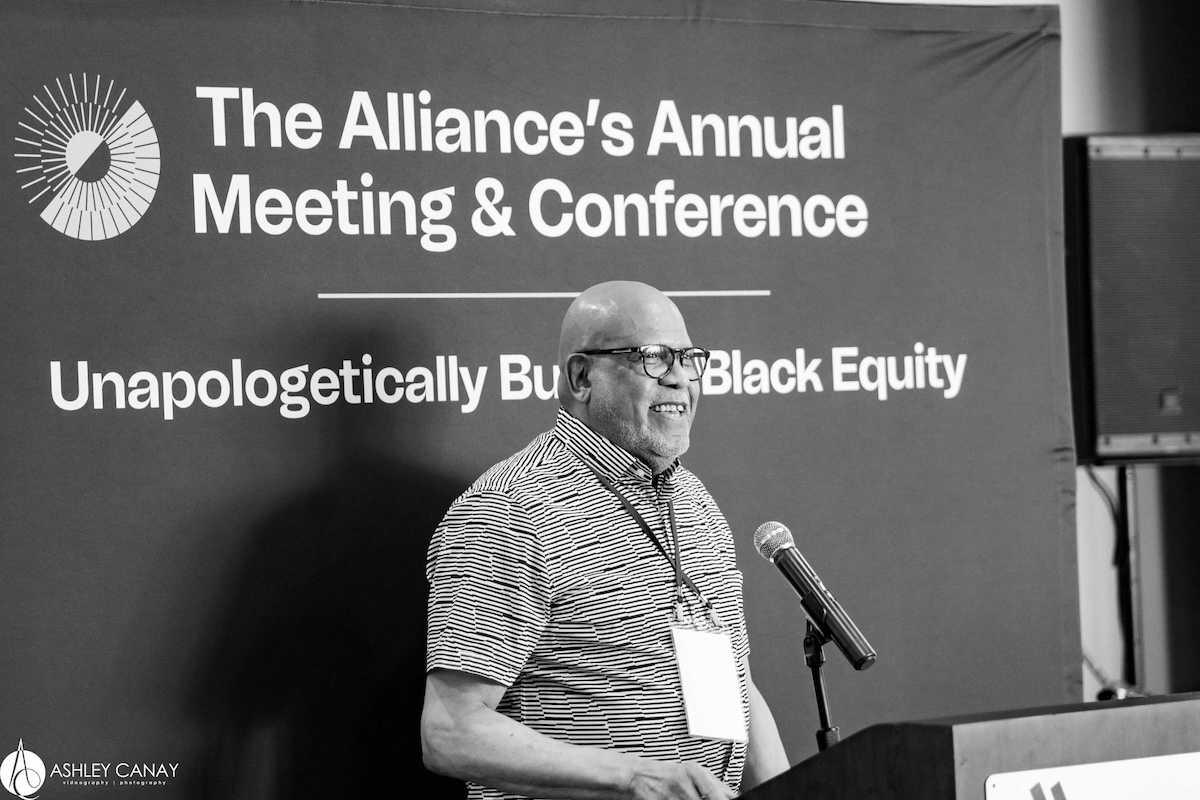
"It is up to us to use it to hold ourselves accountable to Black communities"
The scorecard takes the form of a questionnaire to measure investments across five categories — including how well they reflect the needs and wants of the community, how they address historic disparities, and how they create well-paying jobs.
Though quick to make flashy announcements about big-dollar investments, large financial institutions in general — and white-led financial institutions in particular — have been slower to assess outcomes. "When you look at the scorecard, I call it looking in the mirror," Long says. "And that’s why the white institutions don’t want to look at the scorecard, because they don't want to see the results of it."
While some are resistant, the co-creator of the scorecard is actually a white-led CDFI, Community Vision out of California. "Until now, mission-driven lenders have lacked a coordinated way to track and report on how capital is being deployed into Black-led and Black-centered projects," says Catherine Howard, president of Community Vision. "Without this important data set, it is difficult to implement strong accountability measures that change investment behaviors."
Community Vision now uses the scorecard to assess all of its investments, totaling around $40 million in loans and grants annually across California. "The African American Equity Impact Scorecard gives us that ability," Howard says. "Now it is up to us to use it to hold ourselves accountable to Black communities."
The data available through the scorecard also moved another white-led community financial institution, Maine-based Coastal Enterprises, Inc. (CEI), to change its lending and investment practices.
"The scorecard has been a catalytic tool for CEI, transforming our learnings about racial equity and impact into action as we reevaluate products and underwriting practices," the company's chief investment officer, Daniel Wallace, told the Alliance in a case study. "The scorecard has helped CEI move toward an anti-racism framework for our lending team as we built the language and understanding around the racial equity impacts of lending."
The scorecard also informed the creation of Maine-specific metrics for the organization, including investment targets that cover child care providers and businesses creating products and service to fill unmet community needs.
"The inclusion of a race-explicit equity lens in our deals, the engagement with our staff around these topics, and outreach to our local community have all helped move us toward building stronger community partners, creating a collaborative culture and buy-in at CEI around racial equity, and adding capacity to undertake this work," Wallace said. "For the financial industry, waiting on racial equity work isn’t an option. This work is necessary for all of us to overcome the structural biases and racism that has been built into the lending industry over centuries, to rebuild and revitalize our communities, and to make economic justice a reality for all our borrowers.”
The scorecard is available for all financial companies, developers and funders, not only CDFIs. And leaders at the Alliance and Community Vision believe it's just what the space needs to channel well-intended investments in a way that actually makes a difference for those they're intended to serve. "Don't run away from looking at yourself," Long says. "What matters is the impact of your investment."
(Homepage image: James Eades/Unsplash)
Why Waffle House is a Perfect Place for EV Charging Stations
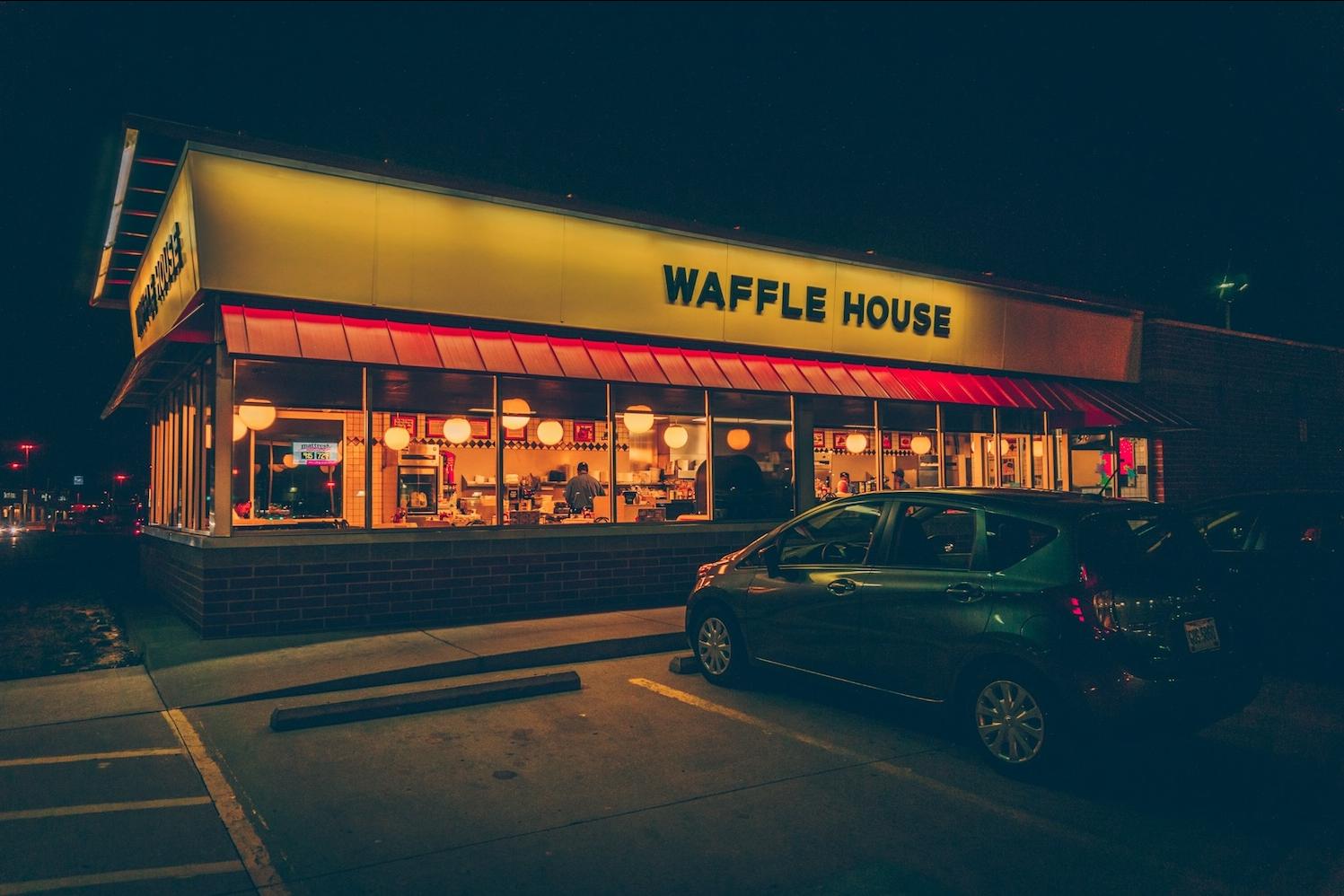
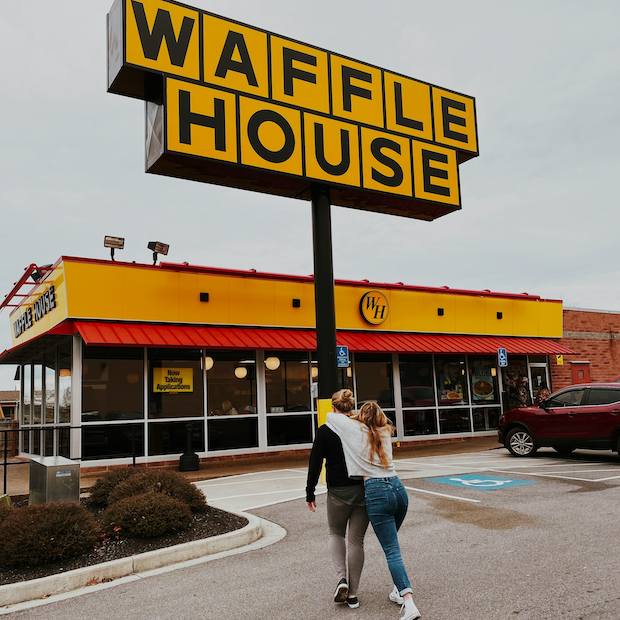
An unusual experiment is unfolding in Tennessee, where the state’s Department of Transportation just allocated the first round of federal funding for new electric vehicle charging stations. As expected, practically all of the new stations will be located at gas stations with retail food outlets, where drivers can grab a bite to eat while they charge up. But there is one outlier. A lone Waffle House represents the only standalone restaurant, and practically the only non-gas station site, in the entire allocation. So, what makes Waffle House so special?
What’s so special about Waffle House?
The inclusion of Waffle House in the Tennessee EV charging station program is all the more impressive because competition for the installation contracts was fierce. Only 30 new charging stations are planned for the first round of buildout, but the state Department of Transportation received applications for contracts covering 167 different locations.
The department ultimately awarded contracts to 10 charging station installers based on a long list of requirements for the charging stations and their proposed locations. The Georgia EV charging station firm EnviroSpark was one of the 10 contract awardees, and it will partner with Waffle House to install four fast chargers at a location in Lakeland, about 25 miles outside Memphis.
“Like all Waffle House locations, the restaurant at 9780 U.S. Highway 64 in Lakeland is open 24/7,” according to EnviroSpark, noting that around-the-clock operation is one of the requirements to receive funding under the federal National Electric Vehicle Infrastructure program.
Waffle House did not issue a press statement to mark the occasion, but EnviroSpark hailed: “Waffle House, a culinary icon of the South, and famous for its commitment to customer satisfaction and community engagement, is embracing the opportunity to contribute to the green energy movement.”
The importance of community engagement
The idea of Waffle House “embracing the opportunity to contribute to the green energy movement” is a long time coming. Unlike other chains like McDonald’s and Starbucks, for example, Waffle House has refrained from applying renewable energy or sustainable building standards to its public profile.
Nevertheless, Waffle House is in a position to make a significant contribution to the zero-emission transportation trend. In addition to fulfilling the requirements for federal funding, Waffle House has acquired a reputation as a trusted center of community engagement, and EnviroSpark already hinted that the Lakeland EV charging stations will be the first in a series of partnerships with Waffle House.
Waffle House has worked to create an open door, all-are-welcome atmosphere that aligns with EnviroSpark’s approach to the EV charging station market. The company says it operates under two missions — "to raise awareness around the benefits of electric vehicles and to build a more robust EV charging infrastructure" — and seeks to address "the pain points of property owners and drivers by enhancing EV accessibility in customer-friendly ways."
Community resilience and the EV connection
Perhaps the most widely known element of Waffle House’s community commitment is its policy of staying open or re-opening as soon as possible after a natural disaster or other catastrophe strikes. The policy includes reverting to a limited menu if necessary to ensure that first responders and residents can get shelter and a hot meal. The company also operates its own fully staffed storm center out of its headquarters in Norcross, Georgia, to help its restaurants prepare.
Waffle House sees its restaurants as a "welcoming beacon after a storm or other natural disaster,” the company states. “Our goal is to get open quickly so we can serve our communities in their time of need. Many customers have had their first hot meal and experienced their first sense of normalcy and comfort after a storm because we were open for them. Our immediate involvement during these difficult times is an extension of our commitment to serving our communities 24/7, especially when they need us the most."
The details of the company’s disaster plans are so meticulous that the Federal Emergency Management Agency uses a “Waffle House Index” to rate the impact of a storm on community resources.
“The index has been used to predict how severely weather will affect an area's accessibility to food, water and essential resources,” USA Today reported in August when Hurricane Idalia was bearing down on Florida. “When the Waffle House turns the lights off, it's bad."
Warning signs on climate change
As a corollary to USA Today’s reporting, one might say that when Waffle House decides to support vehicle electrification, something is afoot.
The EV charging partnership with EnviroSpark seems to be the first noteworthy decarbonization step undertaken by Waffle House since 2010 when the media covered a new solar panel installation at a Waffle House in Norcross, Georgia.
Considering the Waffle House focus on storm tracking, recovery and resiliency, the company might be starting to make the connection between its weather know-how and climate science. That remains to be seen, but vehicle electrification is a good start.
With approximately 2,000 locations across the southeastern U.S. and a solid reputation for community engagement, Waffle House could become a leading ambassador for the transition from fossil energy to zero-emission transportation.
(Image credits: Simon Daoudi and Jon Tyson via Unsplash)
Bridging the Gap Between Donations and Meaningful Connections
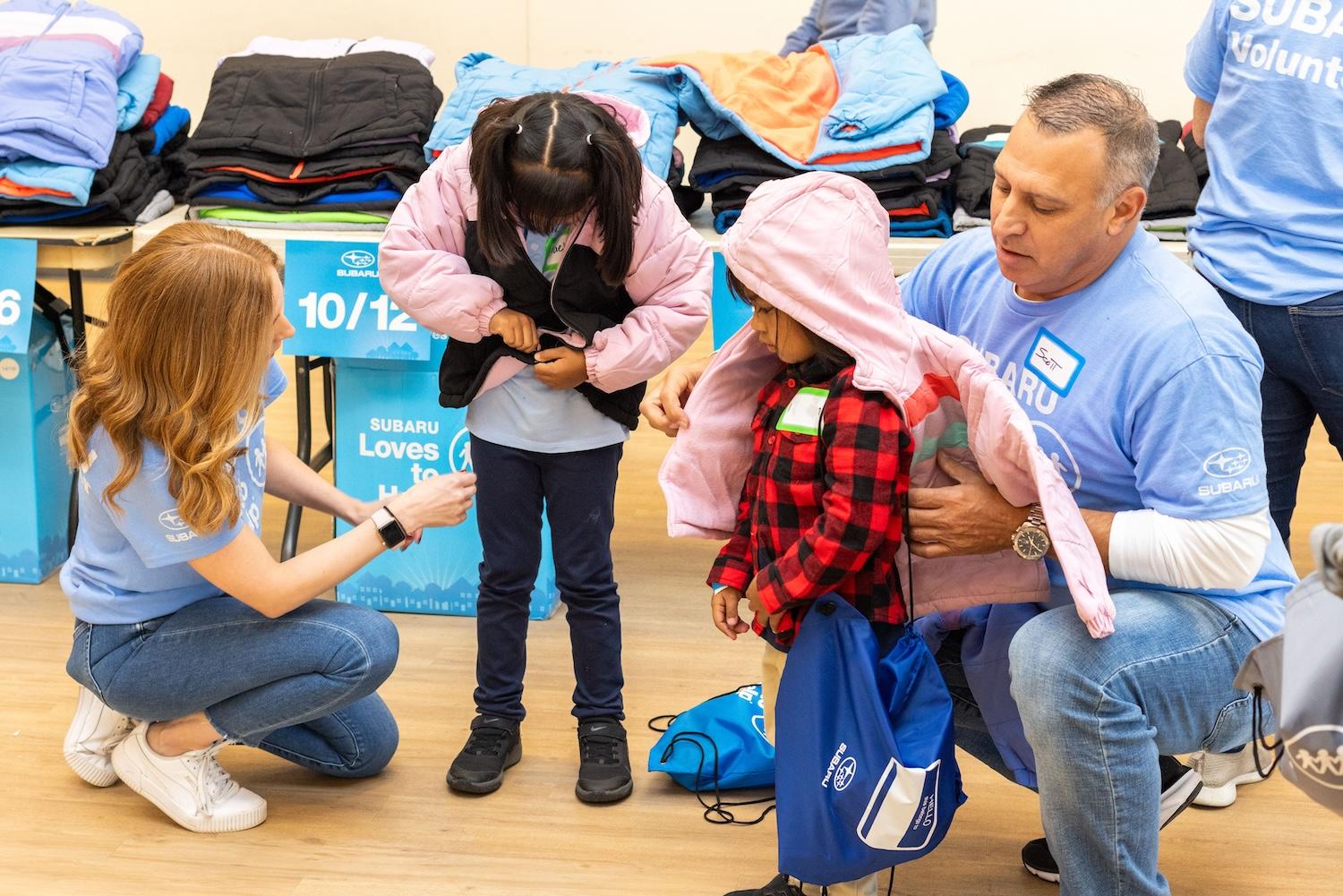

While we live in an age of hyper-connectivity, it often feels like people are more detached from their local communities than ever before. A majority of Americans (57 percent) only know some — or none — of their neighbors, and few socialize with them, according to Pew Research. And businesses are susceptible to the same trap. While corporate social responsibility (CSR) programs abound, few organizations go beyond the act of making monetary donations, missing major opportunities to build meaningful connections with the communities they engage.
At Subaru, we are committed to being a positive force in the communities where we live and work. It’s part of the Subaru Love Promise, our vision to show love and respect to all people at every interaction. This has come to life across dozens of CSR programs over the years. Working together with our nationwide network of retailers who know and understand their communities, we’ve established and nurtured longstanding relationships on behalf of Subaru. From supplying local high-needs schools with critical funding to purchase classroom supplies to teaming up with animal welfare organizations to help shelter pets find loving homes, we’ve had the privilege of interacting with community members on a personal level.
We’ve learned a lot over the years, but one lesson rises above the rest: Businesses cannot make a genuine impact on behalf of a community without building a meaningful connection first.
And our communities need these connections now more than ever. Across the country, hundreds of thousands of people are experiencing homelessness and other urgent need situations. Roughly 653,100 people were experiencing homelessness during a single night in 2023, according to the U.S. Department of Housing and Urban Development (HUD) 2023 Annual Homeless Assessment Report. That’s a record high since data collection began in 2007 and a 12 percent increase over the year before. Nearly three of every 10 people (28 percent) experiencing homelessness are part of a family with children.
Over the years, we've made helping those in urgent need a priority through our Subaru Loves to Help initiative, but with the need higher than ever, we knew we had to do more.
Enter Operation Warm, our new Subaru Loves to Help charity partner. Operation Warm is a national nonprofit that manufactures brand-new, high-quality coats and shoes for children in need. Its mission is to provide warmth, confidence, and hope through basic needs programs that connect underserved kids to the community resources needed to thrive.
In addition to having over 25 years of experience and expertise, Operation Warm stood out to us because it is one of a few organizations helping to provide for children’s basic needs, as well as for their social and emotional development. Per the nonprofit’s motto, it’s offering “more than a coat.”
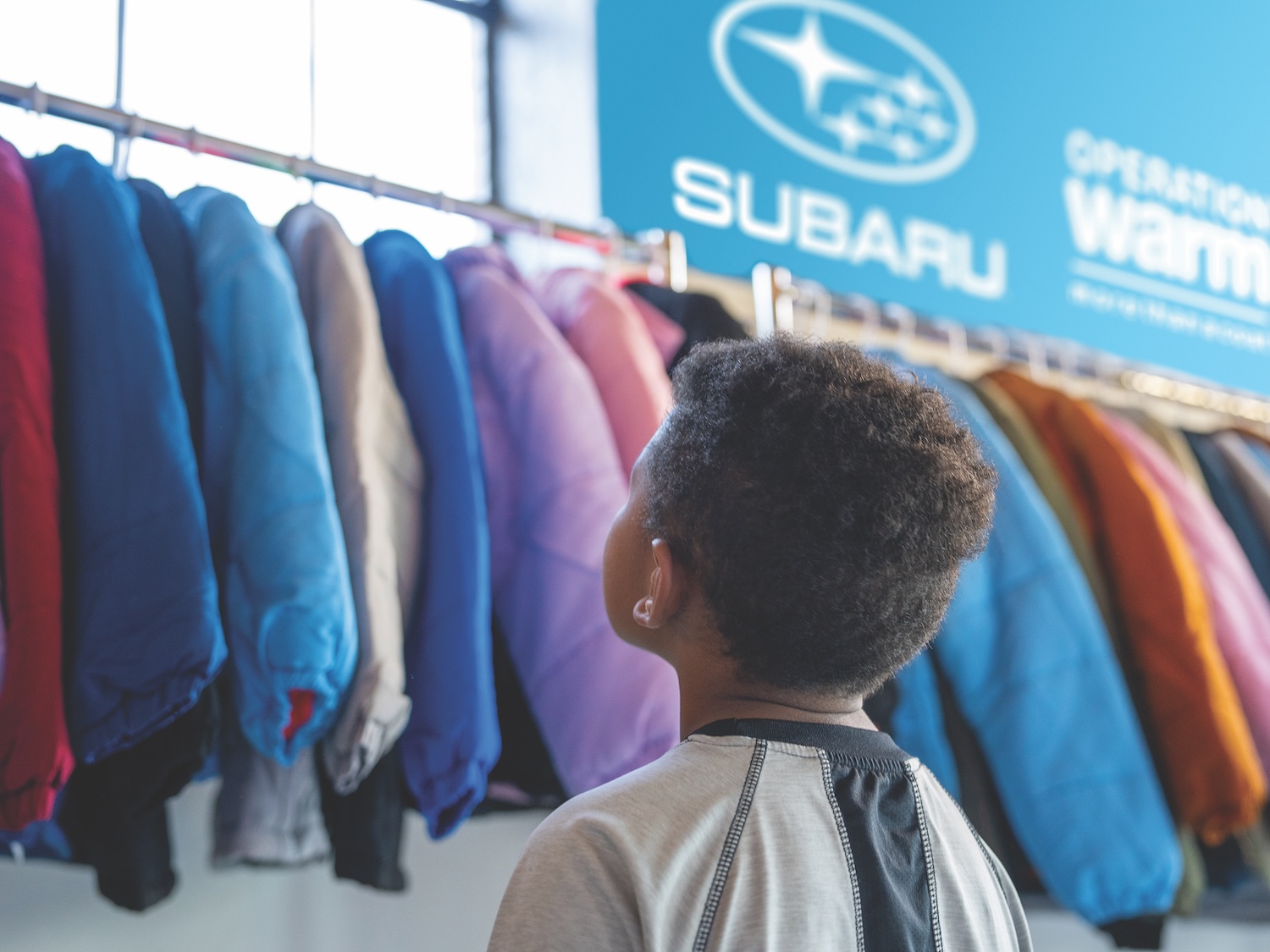
Through this partnership, local gifting events are organized so children can personally choose the items in styles and colors that they prefer. In February, Subaru retailers across the nation will actively engage with local shelters and organizations supporting youth in their communities. These special events, facilitated with the assistance of local beneficiary partners, offer a range of coat and shoe styles and colors, as well as socks — all donated by the Subaru retailer.
At these events children can try on, be fitted for, and choose brand-new coats, shoes and socks that reflect their personal style. These essential items not only keep children safe and warm, but they also provide confidence and can mean the difference between participating in school, activities, and other experiences critical to social and emotional development.
Subaru is proud to be the largest automotive supporter of Operation Warm and shares the organization’s values of community connection. And as with any good partnership, both organizations are benefiting tremendously. Operation Warm is helping Subaru create longstanding relationships between our retailers and local shelters. Our employees and retailers now have the chance to directly engage with people in their communities and fill a very specific need. Hosting gifting events allows them to interact with the children firsthand and connect with each of them individually, which is incredibly emotional.
Simultaneously, Subaru has played a vital role in the expansion of Operation Warm, enabling it to increase its impact in over 600 ZIP codes nationwide. Recognizing the demand for socks as a top request from shelters, Subaru initiated their production, complementing the provision of coats and shoes by Operation Warm. This underscores the strength of the collaboration between national partners and the collective achievements made possible through joint efforts.
We’ve always looked for ways to support those who need it the most in our communities, which is how our Subaru Loves to Help initiative came to be what it is today. Whether it is by providing blankets and socks to homeless shelters, donating food to Feeding America and local food banks, helping Meals on Wheels deliver meals to seniors, or supporting the American Red Cross in disaster response, we believe our communities get stronger when everyone is cared for. Together with our retailers and partners, we are committed to identifying the needs of the people in our communities and helping support them with actions that set an example for others to follow.
We are proud to partner with Operation Warm to offer children in urgent need both physical and emotional warmth, in turn providing them comfort, confidence and hope. As we look to grow our impact in the years ahead, Subaru and our retailers plan to continue going beyond just donations. We believe in the importance of meaningful human connections because nurturing and building relationships within our communities is equally as important as the work we do and the contributions we make.
This article series is sponsored by Subaru of America and produced by the TriplePundit editorial team.
As Bali Chokes in Plastic Waste, Surfers Should Be Part of the Solution
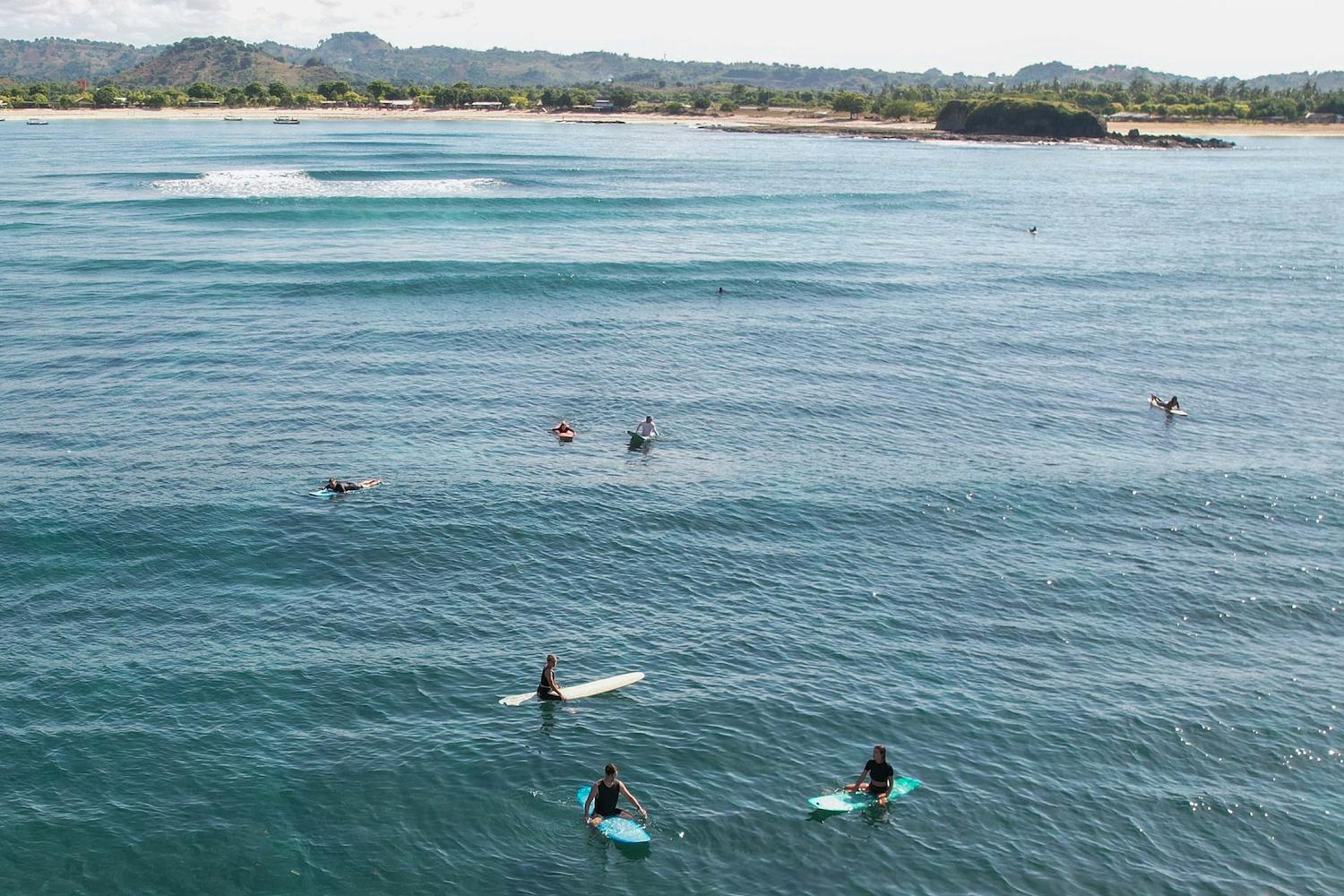

Surfers off the coast of Bali, Indonesia. (Images courtesy of the author)
This story on fighting plastic pollution in Bali is part of From the Frontline, a guest-contributed column where we hear directly from those who are impacted by climate change and environmental pollution and pushing for action. If you're interested in contributing your perspective to this column, please get in touch with us here.
Scroll idly through Instagram’s explore page and it won’t be long before you encounter an influencer’s trip to Bali, full of dream-like beaches, boasting pristine sands and crystal waters. They paint a paradisiacal vision, but if you walk down those beaches yourself, the stark reality of plastic debris intermingled with the sand and a growing tide of trash washed ashore quickly shatters the illusion so carefully cultivated for your digital consumption.
Regrettably, there are no beaches in Bali free from plastic pollution. Each year, an astounding 300,000 tons of plastic waste is generated on the island, with over 50 percent of it either openly burned or thoughtlessly discarded. Consequently, an estimated 33,000 tons of plastic waste find their way into Bali's waterways and oceans annually.
In this era of growing climate consciousness, surfers find themselves on the frontlines of confronting plastic pollution while pursuing their passion. I often have to push debris away from my board when simply paddling out to the lineup, a sadly common occurrence for surfers on the island. It falls upon us, as lovers of the ocean, to ensure its protection by embracing eco-friendly choices whenever possible. Every decision we make, even down to the suits and sunscreen we wear as we ride the waves, contributes to the collective effort of making a positive impact, no matter how small it may seem.
Plastic paradise
Three decades ago, this plastic predicament scarcely existed on the shores of Bali. Back then, everyday materials leaned toward natural biodegradability — picture palm leaves being used as food wrapping. Disposing of these materials meant returning them to the earth from where they came, completing a satisfying cycle of renewal. Almost catastrophically, this mindset purveyed into modern times.
Plastic waste washing up on our shores is hardly an issue unique to Indonesia; it’s a global concern. However, factors such as growing tourism, ingrained cultural practices and a lack of awareness about the lifecycle of plastic has led to the exponential rise in single-use plastics infiltrating the country's waterways. Alarmingly, four of Indonesia’s rivers are among the top 20 most polluted rivers worldwide, primarily due to the mismanagement of plastic waste.
In recent years, a growing number of individuals moved to take action. Brothers Sam and Gary Bencheghib made headlines in 2018 by embarking on a daring kayaking expedition down Indonesia's most polluted river, using a raft constructed entirely from plastic bottles. The brothers went on to found Sungai Watch, a nonprofit that has cleared close to 1.5 million kilograms of plastic waste and counting from Indonesia’s waters. Similarly, Balinese sisters Melati and Isabel Wijsen established Bye Bye Plastic Bags, with a focus on empowering the younger generation to take action through education and political advocacy. The organization has blossomed into one of the largest environmental nonprofits in Bali
It’s impossible to live here and remain oblivious to these pressing issues and the remarkable initiatives striving to address them. Choosing to ignore them is nothing short of an affront to our planet and future generations. Surrounded by such inspirational individuals on this island, surfers must reflect on how they too can make more environmentally conscious choices. For me, this contemplation led me on a journey to build my own brand based on bringing more environmentally-friendly options to surfers in my community.
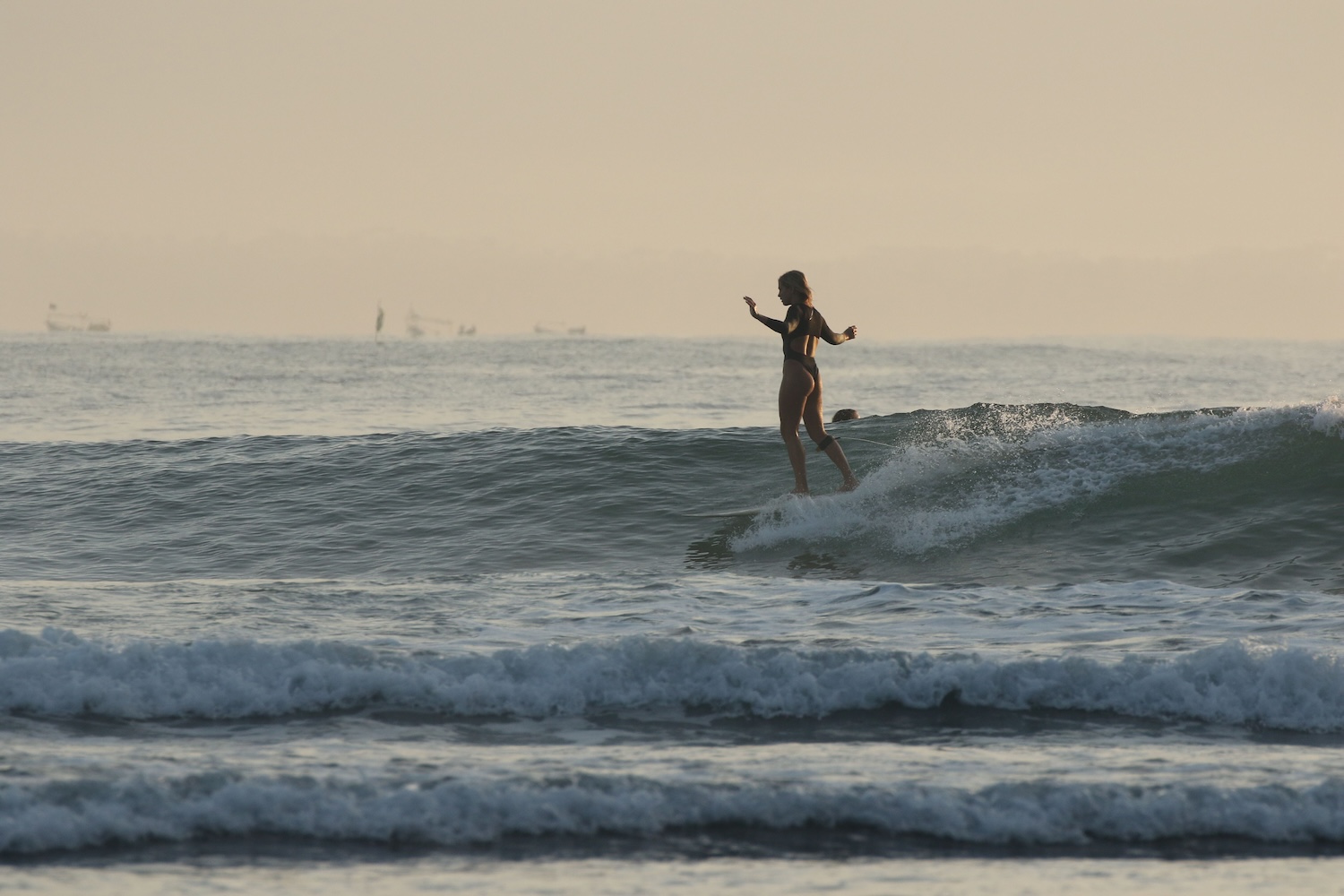
A shift toward sustainable materials
The plastic pollution in Bali has compelled many of us to reevaluate our daily choices. It's not uncommon to see metal, paper, wooden or even fresh plant straws being used in place of plastic ones. However, there are instances when biodegradable options are simply not feasible for products that demand durability and longevity — and surf suits are a prime example.
In these circumstances, we must actively seek out alternatives. Traditional neoprene wetsuits are non-renewable and have significant, long-term detrimental effects on the earth. Fortunately, there has been a notable shift toward eco-friendly, renewable, and recycled materials as demand and awareness grows. For example, Italian fabric manufacturer Carvico launched its innovative Vita fabric in 2014. Originally designed for premium swimwear, this sustainable techno-fabric is composed of regenerated nylon made from ocean and landfill waste. When it came to selecting a high-quality recycled fabric for my own surfwear, I knew this was the perfect fit.
Given the demanding nature of the sport, suits have to not only be recycled but also deliver high performance. In a time of over-consumption, for products to be ethical they must also be long lasting, especially when they exist within one of the most polluting industries: fashion.
Moving toward slow fashion
The rise of fast-fashion giants like Shein has propelled the fashion industry into one of the planet's most egregious polluters, ranking third behind the food and construction sectors. The garment industry is so unregulated that it's hard to say just how much it’s contributing to climate change.
Driven by FOMO (a “fear of missing out”), the average consumer today buys 60 percent more than they did in 2000, further exacerbated by brands churning out double the number of clothing collections annually. This unsettling trend is perpetuated by viral videos showcasing creators unboxing gluttonously large packages of clothing, often to be worn only once or twice, with little regard for the underpaid sweatshop laborers who produced them or the inevitable fate of these hastily manufactured, low-quality garments in landfills.
For a garment to be considered ethical then, it not only must be constructed from renewable or sustainable materials, but also possess longevity and reusability. Opting for pieces that are built to last and remain stylish over time is a conscious choice to reduce one's environmental footprint, as they can be worn time and time again. While trends ebb and flow, true style endures. This principle extends beyond clothing to our surfwear.
By selecting designs that prioritize practicality and lasting appeal over fleeting trends, we can ensure their re-wearability. When designing my own pieces, I drew inspiration from timeless silhouettes that can stand the test of time. Each piece was also designed with adaptability in mind, with my proudest creations being the most versatile ones.
We can all find our own ways to make a difference
Surfers are well known for the profound connection they forge with nature while riding waves. The sport itself is intertwined with a deep love and understanding for the environment. This love is what drives me to harmonize my role as a designer and surfer and reduce my impact on the planet. Each of us must find our own way to tread lightly on the earth, make a difference in our own communities, and safeguard our oceans and environment for generations to come.
Don't Toss Those Veggie Scraps! How to Use Them to Make Stock at Home
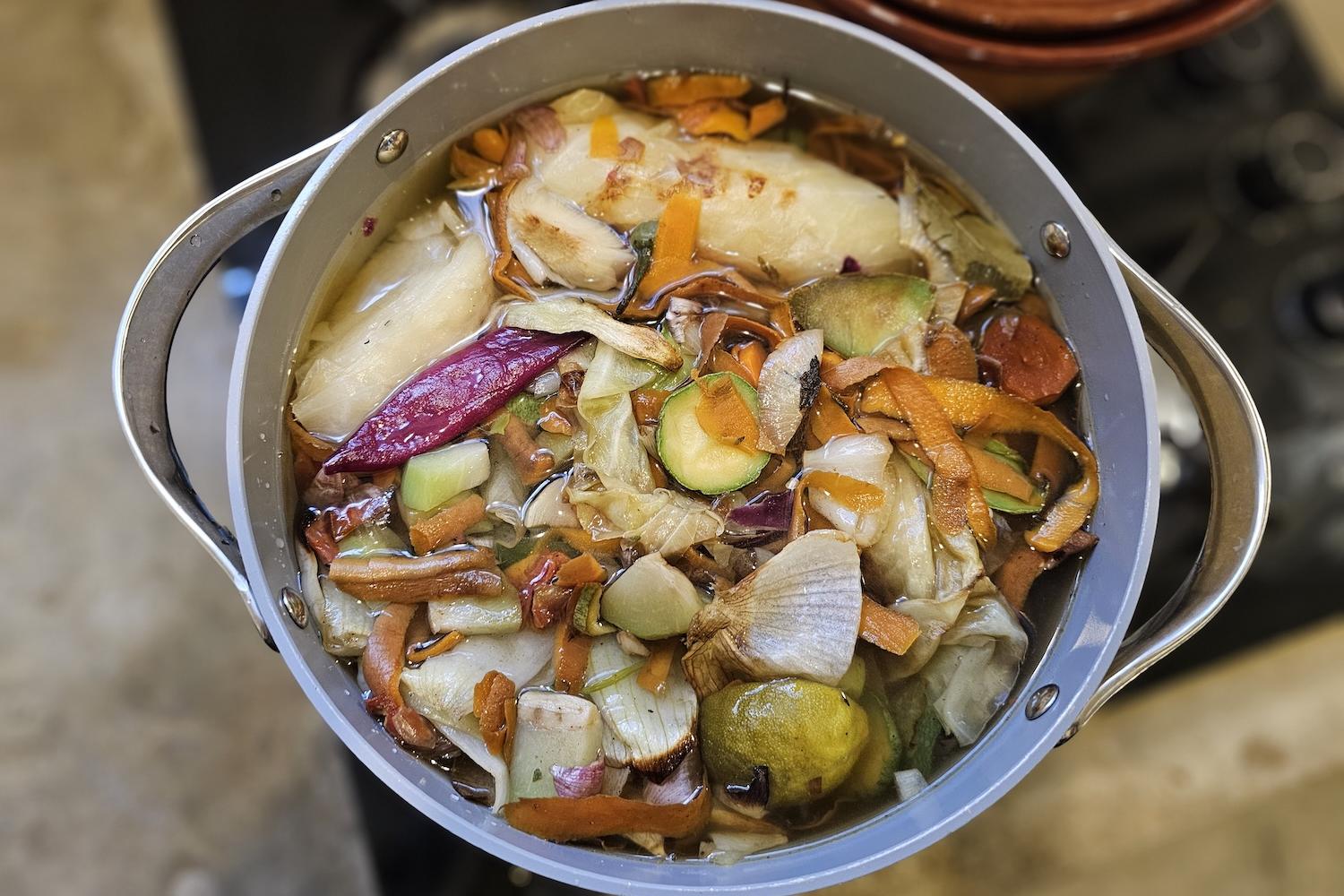

An onion skin here, a carrot top there. The scraps left over from cutting up fresh vegetables may not seem like much, but they can really pile up over time. Trust me, since I started saving mine in the freezer around the holidays, I was shocked by how much accumulated, and a little embarrassed I've never taken the step to save them to make vegetable broth before.
Growing up rurally, we always a had a compost pile, and saving my scraps for homemade stock is one of those things I always "meant to do" since moving to the city, but just never seemed to get around to starting. In the spirit of our 2024 Sustainable Living Challenge, and trying out affordable and accessible things that reduce our personal footprints, I decided to give it a go — and let me tell you, I'm not going back. Read on to learn how it's done, and bookmark this page for when you have enough scraps to start some stock yourself.
How to make vegetable broth from vegetable scraps: Two methods
As you chop and trim, save those scraps in a reusable container or ziplock plastic bag in the freezer. Surprisingly, not all scraps are created equal, and some aren't the best fit for stock. Specifically, scraps from cruciferous vegetables like cabbage, Brussels sprouts, broccoli and cauliflower have a strong flavor that can turn bitter when simmered in stock, so skip those when saving in the freezer. Once your container is full, it's time for the fun part. Making broth at home may sound like a drag, but it's actually much simpler than I imagined and comes together in no time at all.
After a quick web search, I discovered two primary methods to make vegetable broth using scraps: the dump-and-go method, in which you simply cover the scraps with water in a pot on the stove, and another that requires an extra step of roasting those scraps in your oven first.
I could already see a tradeoff coming: Yes, the roasted scraps may lead to a richer broth, but of course it takes longer, requires more cleanup and is a bit more of a pain. To bring you the best advice, I tried both, and I was pretty surprised by the result.
How to make vegetable broth from vegetable scraps: The step-by-step
After saving scraps for about six weeks, I had more than enough to split into two batches. For the first, I simply placed scraps into a pot until it was almost full, covered the scraps with water and placed on the stove to bring to a boil. I used my Mexican clay pot (called a cazuela) for this batch, as it's said to impart a better flavor and I figured it could give the dump-and-go method a fighting chance.

The roasted recipes I read suggested putting scraps on a baking sheet for around 20 minutes at 400 degrees Fahrenheit. From frozen, that didn't seem much time to me, but I was surprised to smell the aroma of roasting veg wafting out of the oven after only a few minutes. On second thought, this makes sense, as of course scraps won't take as long to roast up as a full tray of vegetables.

Same with the non-roasted version: A pleasant, savory smell started coming from the pot before it even came to a boil. Once boiling, loosely cover the pot to allow steam to escape and reduce heat to a simmer.
Some of the recipes I read suggested as little as 20 minutes of simmering time to make vegetable broth, but I really wanted a flavor payoff that made it feel "worth it" to make it myself. Generally with any soup, the longer you cook it, the better it tastes. To give it a full go, I kept the pot simmering longer and tasted every 30 minutes to see how things developed.

Surprisingly, after about 20 to 30 minutes of boiling, I'd say the flavor was about on par with what you'll get with most pre-packaged vegetable broths out there. I let mine simmer for about an hour and a half to see what would happen, but I saw the best flavor and color after about 45 minutes of simmering time — making the dump-and-go method a breeze with almost zero work and less than an hour of waiting.

Once the roasted version is out of the oven, I repeated the same process — putting the roasted scraps in my plain ol' mass-market pot, covering them with water, and bringing to a boil before reducing to simmer and covering loosely with a lid. The water in the pot turned a rich brown color much faster (before even coming to a boil), but I also used warm water to get all the roasty bits off the pans and poured this into the pot as well.

Most recipes indicate you can simmer the roasted version for as little as 20 to 30 minutes too, but I also went a bit longer here to see how flavors would develop.
Once the broth has reached your desired flavor, remove from heat and allow to cool slightly before pouring into a strainer over a heat-resistant bowl. Press down on the scraps to get out as much liquid as you can, and then discard the scraps in the compost bin (if you have one) or in the trash.

The verdict
I'm shocked to say I actually preferred the flavor of the dump-and-go version. The roasted version became very dark in color, which doesn't really bother me since I mostly use broth for cooking beans and making tomato-based soups that already have a deep hue of their own. I also used things like onion skins, which are known to impart a darker color — if you want a paler broth, keep the onion skins out of yours. But beyond the color, I found the dump-and-go version had a cleaner and brighter flavor, while the roasted version tasted a bit more muddled and even slightly bitter.
After doing more research, I also learned that the whole "longer tastes better" thing really applies more to seasoned soups that will richen with the wait and meat stocks that need to break down over longer periods of time. To make vegetable broth with vegetable scraps alone, about 20 to 45 minutes is an ideal time window — any longer, and you could actually lose flavor or risk your broth becoming bitter.
Now knowing this, my "wait and see" method may have led to a slightly more bitter roasted broth, so I'll definitely give both a whirl again to see which I prefer. But the best news for all the scrap-savers out there is that this is one instance where less work and less time can actually yield a better result.
Heck yes for happy accidents and waste reduction. Taking an afternoon to make vegetable broth will be the new fate for all future scraps in my kitchen. What do you guys think? Will you give it a try in yours? Let us know how it gos here!
Into sustainable tips like these? Follow TriplePundit's 2024 Sustainable Living Challenge all year for affordable and accessible ideas to reduce your personal footprint. February is Home Month, where we dive into how to reduce our environmental impact at home and have a little fun while doing it.
Can You Really Reduce Food Waste With ChatGPT? We Tried It To Find Out
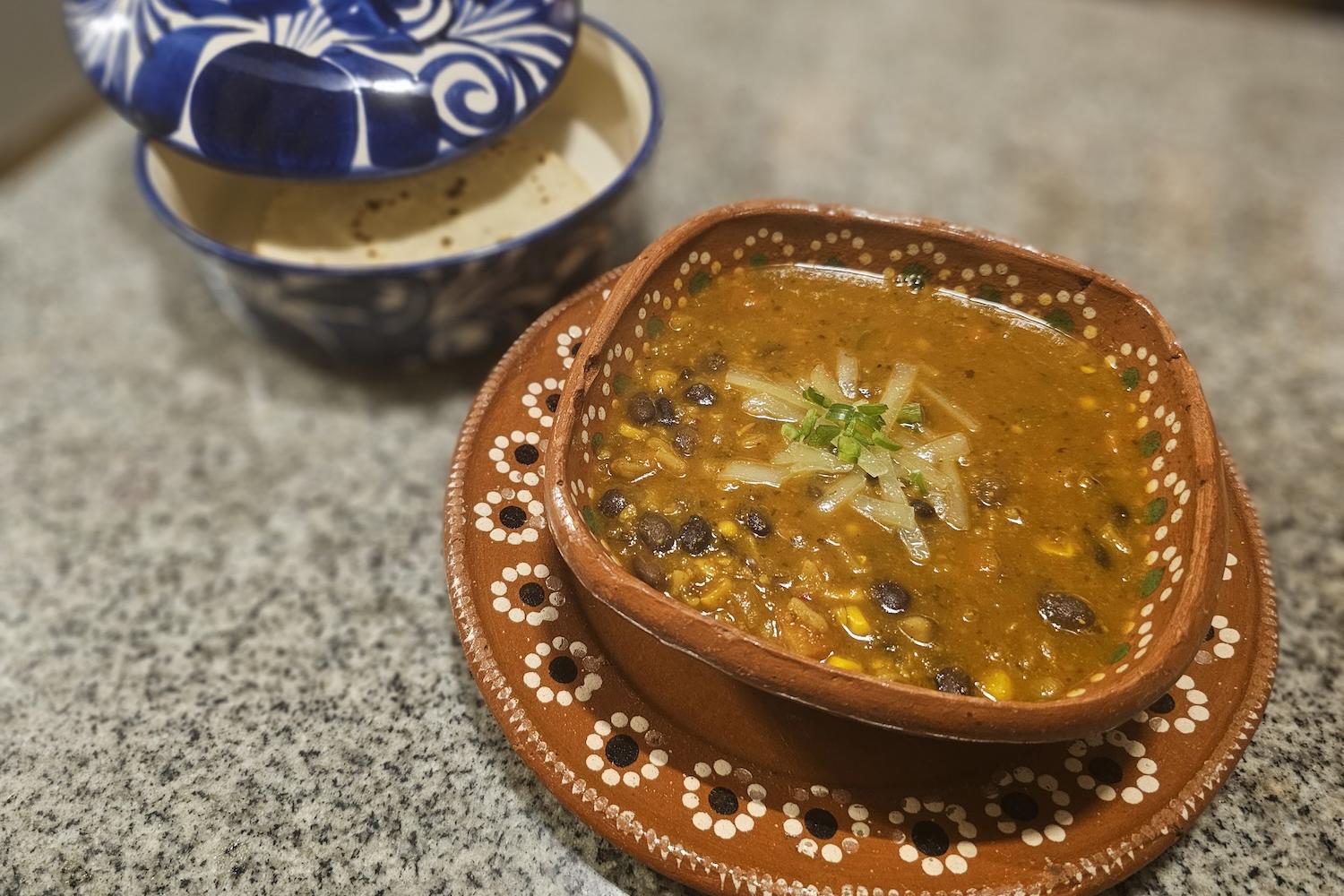

Some spicy black bean soup I made with the help of ChatGPT.
We heard through the grapevine that everyone's favorite digital assistant, ChatGPT, is also a powerful ally for reducing food waste at home. I for one was a bit skeptical. It seems you can't shake a stick these days without hitting a new artificial intelligence tool that promises the world but often fails to deliver. Can the AI chatbot really help us throw less in the bin? We gave it a try to find out.
How to reduce food waste with ChatGPT
As internet buzz tells it, you can enter your latest grocery haul, the contents of your fridge or items nearing spoilage into ChatGPT, and it will crawl the web for recipes to help you use them up. This isn't a new concept: Apps like SuperCook also provide recipes based on what's in your fridge, and databases like Allrecipes and Big Oven aggregate recipes specifically for using up leftovers. Fancy smart refrigerators can even scan your food and warn you when something could be on the verge of going bad.
But let's be real, not everyone can afford a $4,000 fridge, and it can be tedious to select ingredients manually from apps or scroll through large databases to find something that looks good to you. The notion of automating the search and getting straight to the good stuff is promising, especially if you use speech-to-text to rattle off your ingredients into ChatGPT as you look through your fridge.
Does it really work?
For my first try, I gave ChatGPT a pretty tough task. Since I just moved apartments and mostly skipped the grocery store for a couple weeks in preparation, I had very little in my fridge and pantry. I gave it a go anyway (don't judge me for saying please and thank you to a machine — if these things eventually outsmart us, they may as well think we're nice).
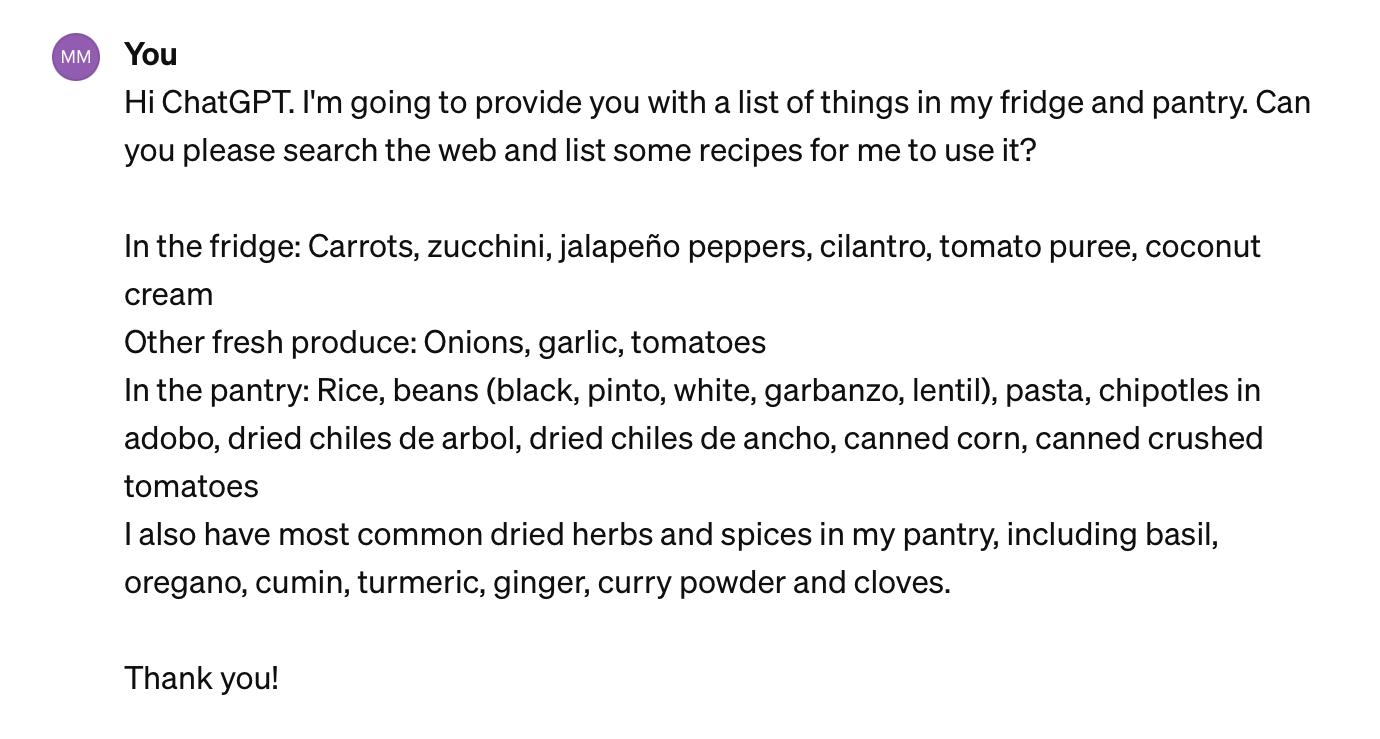
I kept the prompt pretty simplistic, and also didn't get super specific about things like spices or basics like oil, vinegar, sugar and flour to see what it could do with less drafting work. The first response yielded five recipes, including a carrot and jalapeno soup I'm pretty excited for and two curries similar to recipes I make at home often. ChatGPT offered descriptions and links to each recipe online, and they all include things like oil and salt (which I didn't specifically mention) so you don't miss anything by not taking the time to list basic staples individually.
Not a bad start, but I was looking for more diversity, so I asked a short and simple follow-up: "Can you list some more recipes with the same ingredients?" This time, seven recipes came back — including a pickled jalapeno and carrot concoction I'm curious to try and a few versatile side dishes featuring the bit of produce I had on hand.
But it seemed it could do more to really make use of everything. Since it hadn't mentioned pasta yet, I gave that a try: "Can you list some pasta recipes using these ingredients?" For this one, the responses changed. Rather than a description of each recipe with a link, ChatGPT listed high-level instructions for six recipes within the chatbox.
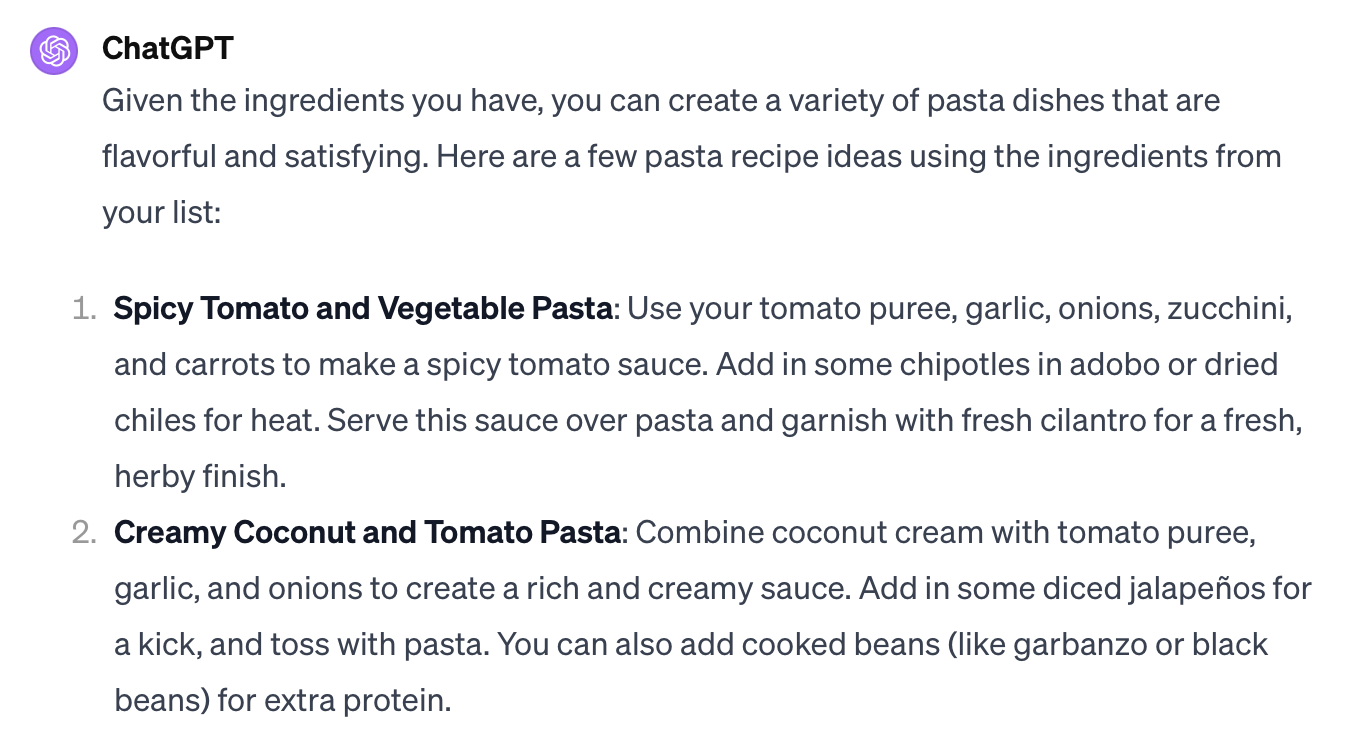
Since I cook at home pretty often, I could probably make these dishes using only these instructions, but many would benefit from more detail, so this breakdown when asking a few follow-up questions from the same ingredient list is a clear drawback. I copied my list and started a fresh chat with some more guidance.
 The links were back, but the responses weren't as accurate as I'd hoped from a more specific prompt. Curiously, though I mentioned soups rather than pastas this time around, ChatGPT suggested two pasta dishes and no soups. It also ignored my request for 20 recipes and only listed seven.
The links were back, but the responses weren't as accurate as I'd hoped from a more specific prompt. Curiously, though I mentioned soups rather than pastas this time around, ChatGPT suggested two pasta dishes and no soups. It also ignored my request for 20 recipes and only listed seven.
Still, it was working from a pretty limited list of ingredients, and I was curious how it could perform with some more to choose from. After our first trip to the grocery store post-move, I headed back to ChatGPT to give it another go. I added a wider selection veg, including broccoli, cauliflower, potatoes and cabbage, as well as some citrus fruits, fresh herbs, oat milk, and an expanded list of pantry items including soy sauce, nuts, and grains like quinoa and farro.
Surprisingly, a larger list didn't turn up more recipes. ChatGPT gave me five recipes to start with, although I asked for 20, the same amount it gave me when I had less stuff. To exhaust all my options, I tried the reverse and only gave it one ingredient that was on the edge of spoilage.
 This turned up a solid result without the bother of listing everything I had on hand: ChatGPT recommended eight ways for me to use up my neglected carrots, including links for each.
This turned up a solid result without the bother of listing everything I had on hand: ChatGPT recommended eight ways for me to use up my neglected carrots, including links for each.
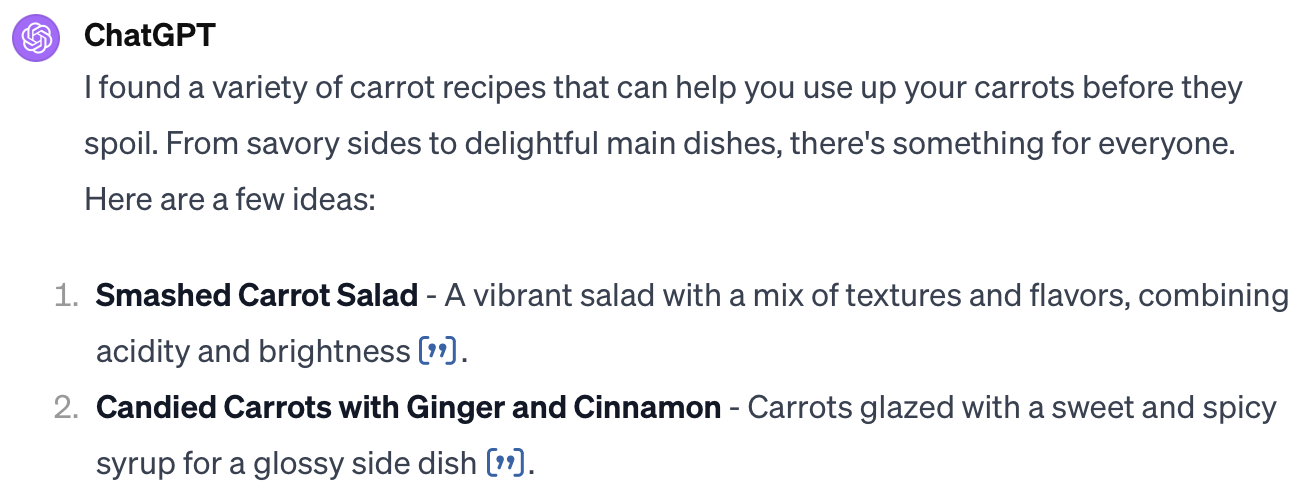
Is it worth it?
It wasn't perfect, but I'd use it again. I got a decent variety of recipe ideas — with American, Italian, Mexican, Moroccan and Greek fare all making the list through my various exchanges — and I traded a full web search for a simple question that took less than a minute to draft.
It's worth noting: I used the same prompts on both the free GPT3.5 version and the paid version, GPT4, which costs $20 per month. Both worked, but GPT4 clearly outshines as GPT3.5 does not provide links for any of its responses.
If you already pay for GPT4, this is a solid option to take the guess-work out of cutting food waste, but I wouldn't say it's worth shelling out $20 a month unless you can also use ChatGPT for other things. Google's ChatGPT rival, Bard, also does pretty much the same thing for free (although sometimes links are missing), so there's that, too.
If anything, an exercise like this can teach us that even when we think "there's nothing in the house" to cook so we have to order takeout or head back to the store, we can often do more than we think with what we have on hand, helping us to save money, reduce waste and lighten our impact on the environment. Considering global food waste contributes more carbon emissions than most countries, it's certainly worth a try.
Into sustainable tips like these? Follow TriplePundit's 2024 Sustainable Living Challenge all year for affordable and accessible ideas to reduce your personal footprint. February is Home Month, where we dive into how to reduce our environmental impact at home and have a little fun while doing it.
How to Store Your Fruits and Vegetables So They Last Longer
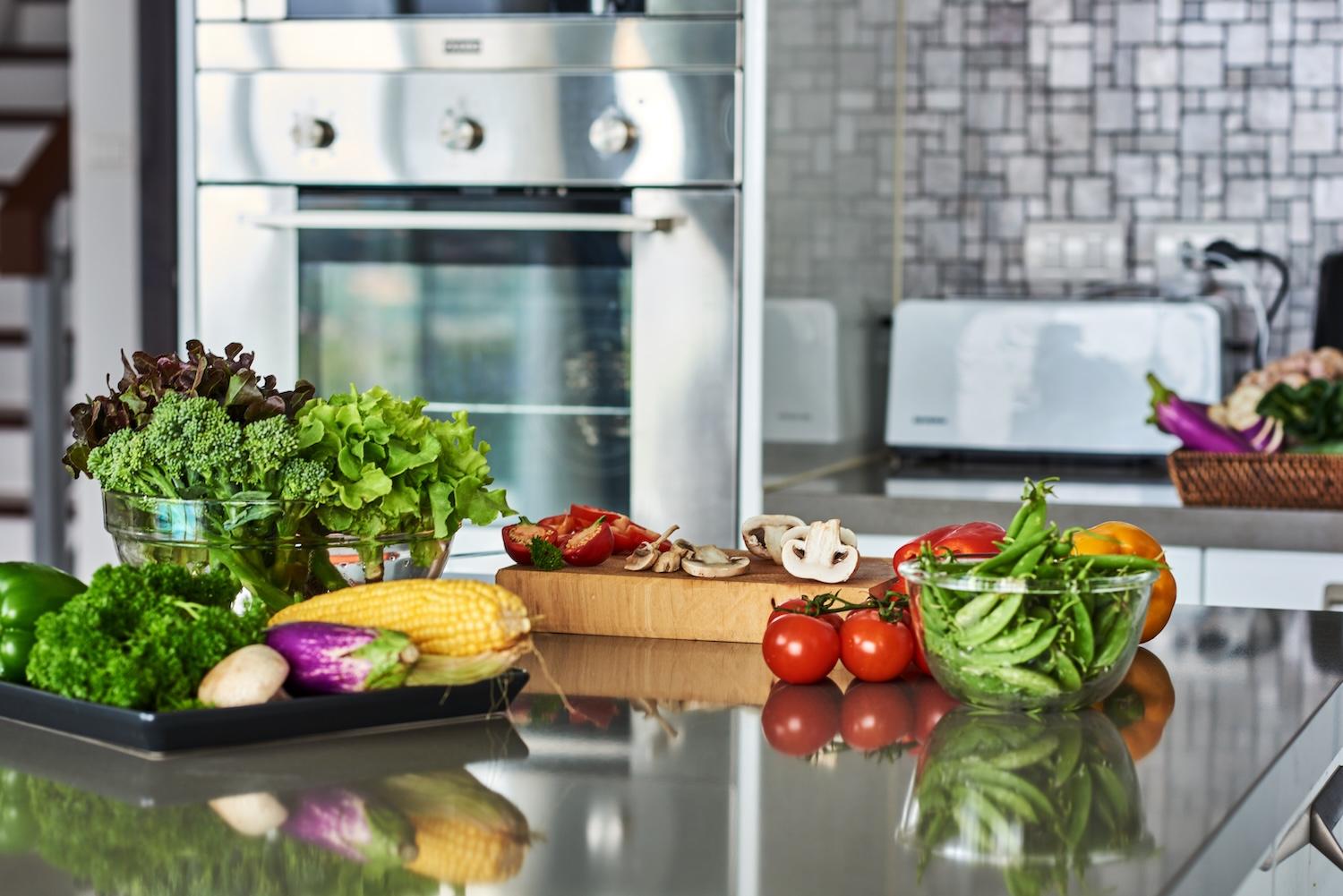

You're probably storing your fruits and vegetables wrong. It may sound like clickbait, but the truth is improper storage is the No. 1 reason your fresh fruits, vegetables and herbs are spoiling faster than you can use them. Learning how to store fruits and vegetables properly can extend their lives for days or even weeks, helping you to cut down on food waste, reduce your personal footprint and avoid tossing your hard-earned money in the trash.
As far as sustainable habits go, it's hard to get more low-lift than this one, as it's mostly about learning new things and making creative use of materials you already have to cut your waste down to size. We're breaking down the basics as part of our 2024 Sustainable Living Challenge.
How to store fruits and vegetables properly: The basics
Learning how to store fruits and vegetables properly boils down to two things: knowing which foods should go in the fridge, and keeping ethylene-producing foods and ethylene-sensitive foods away from each other.
That sounds complicated, but it's actually super simple. Some produce likes the fridge, while others prefer a cool, dark place. Ethylene, meanwhile, is a gas produced by some foods as they ripen that can cause other foods to ripen and spoil faster. Learn how to store fruits and vegetables like a pro by consulting our list, as well as this one-sheeter of ethylene-producing and -sensitive foods.
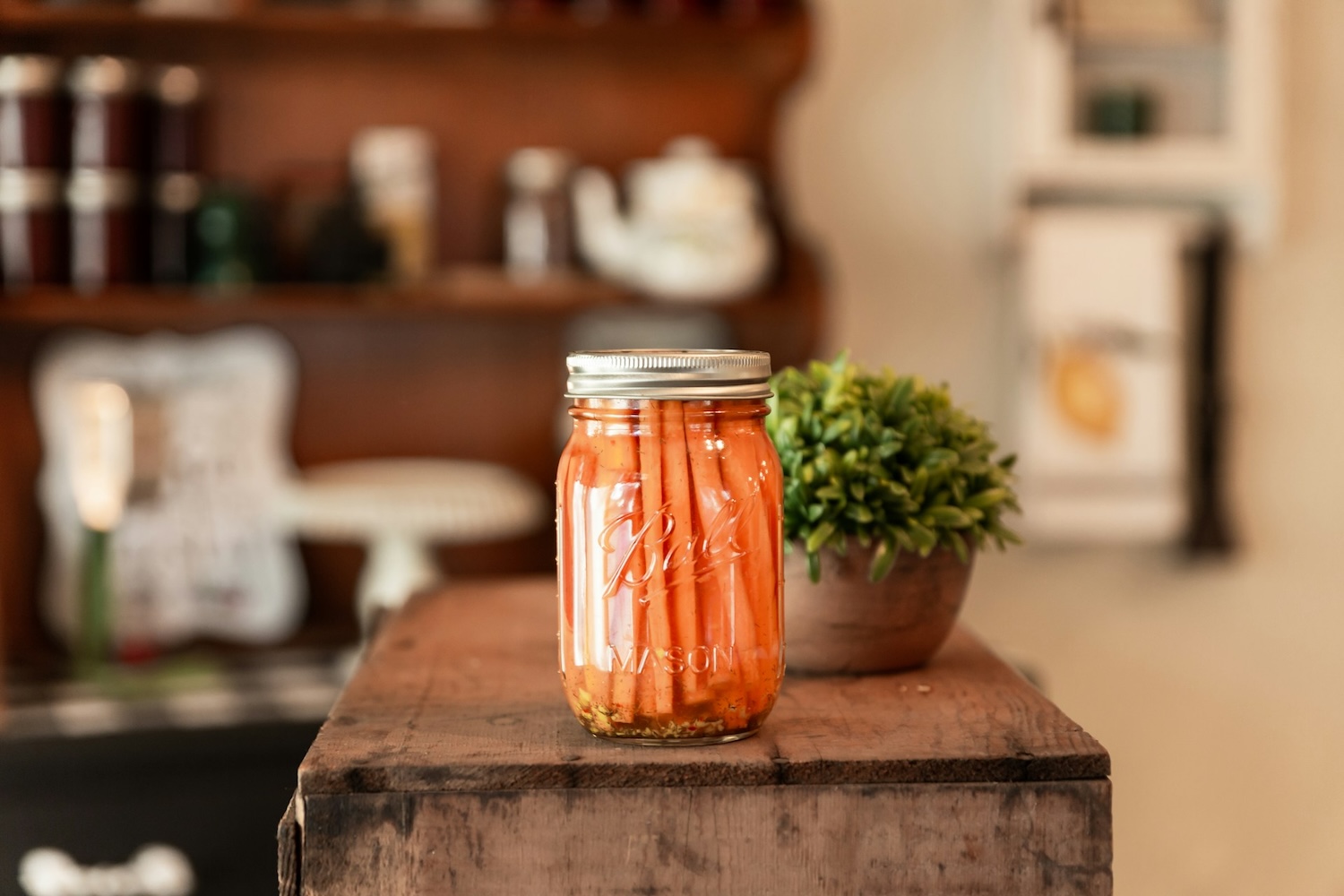
How to store fruits and vegetables: In the refrigerator
Carrots and celery. Learning how to store fruits and vegetables comes with curiosities, and celery and carrots are a prime example. If you plan to use your carrots and celery in a few days, they're fine kept in the crisper drawer of your refrigerator. But you can keep them crisp for way longer if you cut them up and store them in glass jars filled with water — this method also works for reviving forgotten celery or carrots that have already started to go soft.
Cucumbers. Cooks are split on the best place to store cucumbers: While their crisp texture lends them to being served cold — and the refrigerator can indeed extend their lives — cucumbers are prone to damage if left in too humid an environment. To prevent this, store cucumbers in a covered (but not airtight) container lined with a clean tea towel.
Peppers. From sweet bells to spicy serranos, peppers will last longer when stored in the fridge, but you also want to avoid excess humidity. The gurus at Martha Stewart's blog recommend storing bell peppers in a resealable plastic bag, while the chefs at Master Class suggest storing jalapeños and serranos in a paper bag, both in your fridge's crisper drawer. Both bag types can be reused time and again to reduce waste.
Cilantro, parsley and asparagus. Store cilantro and parsley like fresh flowers, trimming the bottom of the stems, placing them in a glass jar with a bit of water and putting them in your fridge. They will keep this way for about a week. To maximize freshness for up to a month, drape a reused plastic produce bag over the jar of herbs, making sure it's covered but not sealed. Surprisingly, asparagus is also best stored this way and will keep crisp for days longer.
Other fresh herbs like oregano, rosemary, thyme, sage, chives and mint. Wrap these fresh herbs in a damp tea towel inside a ziplock bag in your refrigerator. Check them frequently, removing any bits that are going off and re-moistening the towel as needed, and they'll keep for a week or longer. Basil is best left on the countertop (see below).
Green beans. It's a race against the clock with green beans. They love the cold, so get them in the fridge as soon as you get home from the grocery store or farmer's market. Keep them in the crisper drawer in an airtight container lined with a tea towel to avoid excess moisture.
Lettuce and leafy greens. Excess moisture is what causes greens to start wilting or go brown. Keep them dry by storing loose greens in an airtight container with tea towels on the top and bottom to maintain freshness for 10 days or more. Wrap whole heads of lettuce in clean tea towels and keep them in the crisper drawer for up to three weeks.
Eggplant. Treat these similar to lettuce, wrapping the whole eggplant in a tea towel and placing inside a covered (but not airtight) container.
Zucchini and summer squash. Keep these in a paper bag in your crisper drawer to prevent them going soft.
Broccoli, cauliflower, cabbage and Brussels sprouts. Store these items stem-side-up in a covered (but not airtight) container or a reused plastic bag. Make sure to maintain ventilation and avoid wrapping too tightly, and avoid storing these vegetables directly next to your fruits as they emit ethylene gas which can make fruits ripen faster.
Mushrooms. Mushrooms are sensitive to absorbing other flavors and becoming soft when exposed to too much moisture. Store in a paper bag and away from strong-smelling foods like takeout for best results.
Citrus fruits. Store your lemons, limes, oranges, grapefruits, and other citrus in mesh or paper bags in the crisper drawer of your fridge, and avoid cramming them together too tightly as this can cause them to mold.
Most other fruits. Other than those listed below, most fruit is best stored in the crisper drawer of your refrigerator and away from ethylene-producing vegetables. Some fruits, including apples, kiwis, mangoes, peaches and plums, also produce ethylene, so try to keep these separated from the rest of your produce to avoid faster ripening.
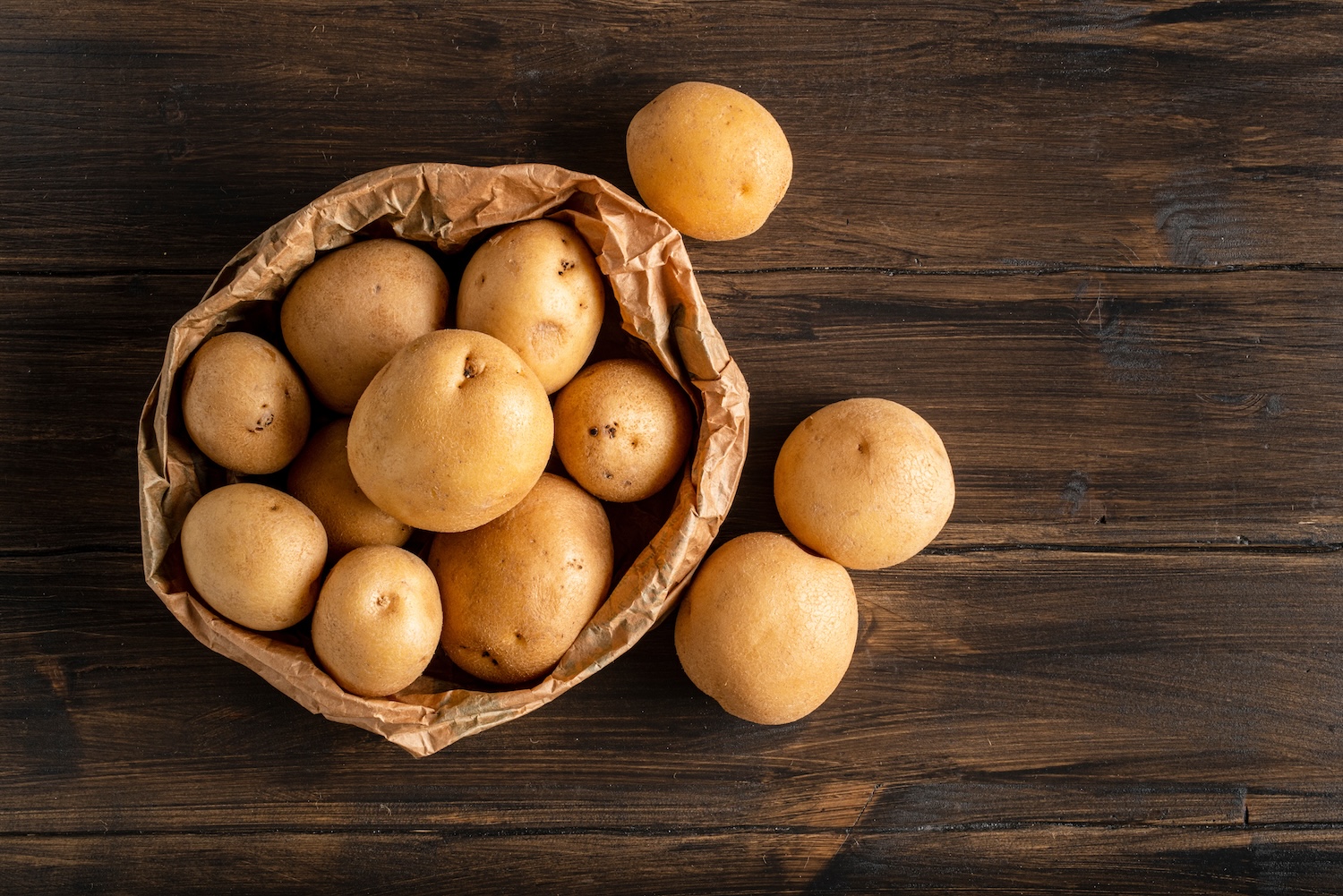
How to store fruits and vegetables: Outside the refrigerator
Tomatoes. Refrigerating tomatoes diminishes their flavor and can impart a mealy texture. Keep your tomatoes on the countertop out of direct sunlight, and avoid piling them on top of each other if you can as this can make them go moldy much faster.
Berries. This may also come as a surprise, but the humidity in your fridge can actually make berries develop that dreaded mold much faster. To keep your strawberries, blueberries, raspberries and blackberries fresh for longer, store them outside the fridge and do not wash them until they're ready to use.
Onions and garlic. Onions and garlic will last longest when kept in a cool, dark place. While a root cellar (or even a basement) isn't an option for everyone, you can mimic these conditions by keeping your onions in your pantry or inside a reused paper bag or cardboard box for low light and good ventilation. Keep onions and garlic away from potatoes, as they emit ethylene which will make the potatoes ripen faster.
Potatoes. While you want to keep your potatoes away from your onions and garlic, you'll store them the same way, creating that cool, dark place in a cupboard or with a paper bag or box.
Winter squash. These love a cool and dark place, too, so keep them in the cupboard or a paper bag or box, away from your onions and garlic.
Bananas. Keep your bananas on a hook or in a bowl on your countertop, away from your onions and garlic.
Basil. Do the same as your cilantro and parsley, putting in a jar with water and covering loosely with a reused produce bag, but leave it on your counter and out of direct sunlight.
Avocados. Keep your avocados on the counter so they ripen faster, but if you start to notice softness before you're ready to use them, go ahead and pop them in the fridge to extend their lives for a few more days.
Melon. Keep melon on the counter, away from direct sunlight, until you're ready to slice it, and store any leftover cut melon in an airtight container in the fridge to extend longevity.
Nonprofit Builders are Pivotal in Pioneering AI for the Public Good
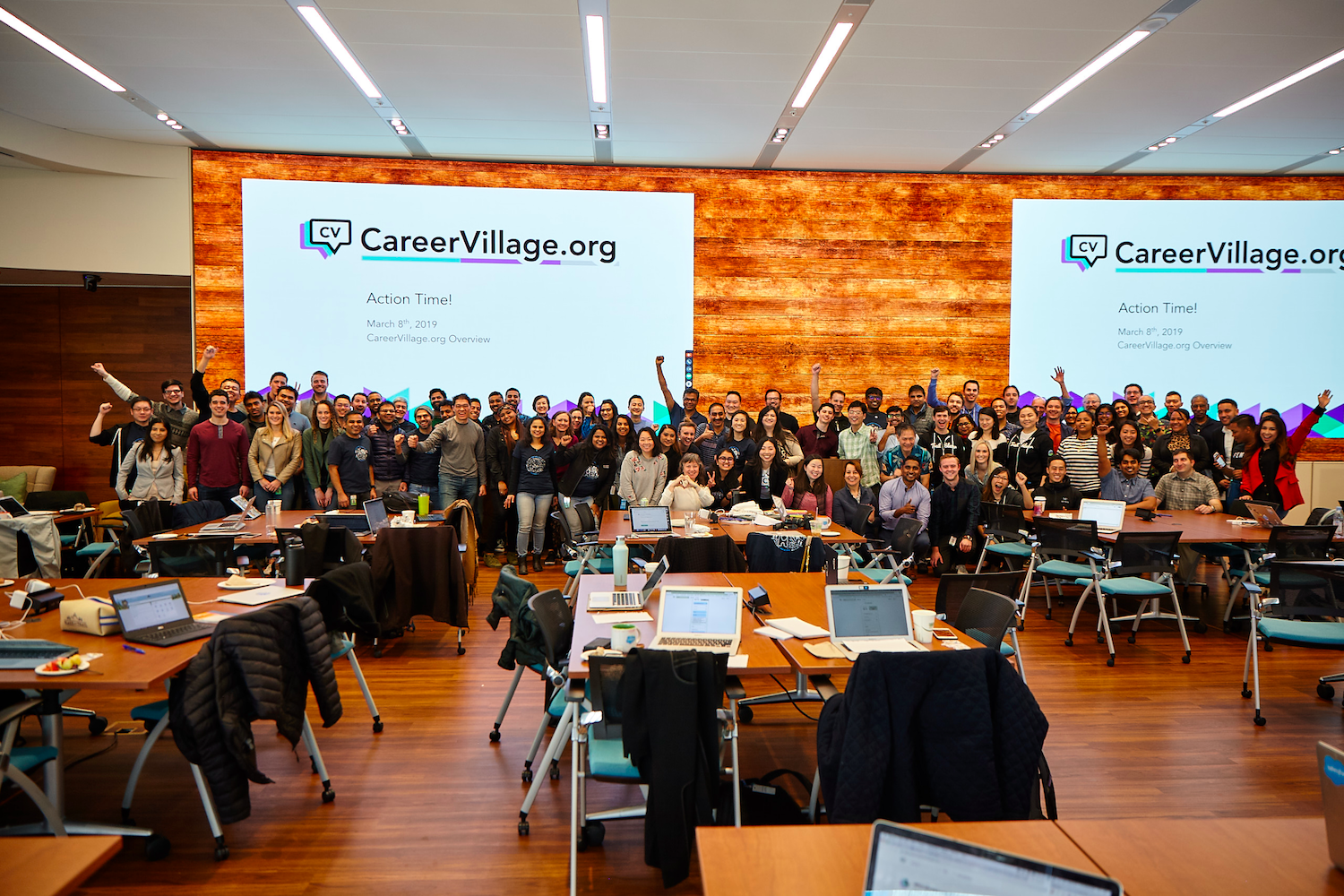

Over 7 million learners from 190 countries have accelerated their careers with the help of CareerVillage.org. Among the nonprofit's offerings is a free AI chatbot that can help students perfect their resumes, hone their interview skills, choose a college major and more.
This story is part of AI for Good, a guest-contributed column focused on harnessing the power of artificial intelligence to reduce environmental impact and improve quality of life. If you're interested in contributing your perspective to this column, please get in touch with us here.
A big announcement rocked the philanthropic world at the close of 2023. Ten leading funders pledged $200 million to advance artificial intelligence (AI) “for the public interest.” The initiative aligns the philanthropies’ grantmaking with the framework advocated by U.S. Vice President Kamala Harris. During her landmark speech last fall, she discussed the future of AI and how the technology has the potential to bring "profound good" and "profound harm."
Most of the discourse around AI to advance public interest is about mitigating harm with stronger governance. While this is critical, it’s also worth thinking about the other side: How do we ensure AI improves life for communities who have been left behind?
After a decade of working closely with over 100 tech-powered nonprofits, I have seen tech's potential to address our most pressing challenges. I’ve also seen vulnerable populations get left behind in moments of innovation. This time, it should be different. AI should not only protect but actively work for the public interest. And nonprofits are crucial in fulfilling this mission.
The evolving AI for humanity landscape
As part of their $200 million philanthropic commitment, the coalition aims to “leverage AI to innovate in the public interest and deliver breakthroughs to improve quality of life for people around the world." Fortunately, this future is not hypothetical. It is unfolding now thanks to AI-powered nonprofits.
Builders are already deploying AI to address every problem humanity faces. Since the release of ChatGPT, AI innovations for social causes have massively increased. For instance, 37 percent of the nonprofits that applied to Fast Forward’s most recent tech accelerator are building AI tools. This trend is a significant jump from last year's applicant pool.
Like any other industry, the nonprofit sector is realizing the vast opportunities of AI. We also shouldn't fail to notice that nonprofits are uniquely positioned to innovate with AI in the public’s interest since they operate without a profit motive. When it comes down to it, public interest isn't a side project for most nonprofits — it’s the main thing.
Here are just a few examples of nonprofits using AI to create a positive impact on humanity.

Providing career advice to under-resourced youth
The opportunity gap is persistent and complex. A convergence of factors like race, economic status, and family background significantly shape employment prospects and income disparities. Jared Chung, the founder and executive director of CareerVillage.org, has been tackling this issue for over a decade. His tool of choice? Technology. It’s what inspired CareerVillage and its AI career mentor, Coach. Unlike traditional (read: human) career advisors, Coach is free and available 24/7, offering students personalized guidance in navigating their career paths.
This level of accessibility is key for students who may have a job that takes up their free time or might not have anyone to talk with about career paths. Learners have used CareerVillage to enhance their resumes, conduct mock interviews, get advice on college majors and much more. With CareerVillage's support, over 7 million learners from 190 countries have accelerated their professional journeys. Bridging the opportunity gap is crucial to addressing societal inequity, and it begins with efforts from AI-powered nonprofit builders like Jared.
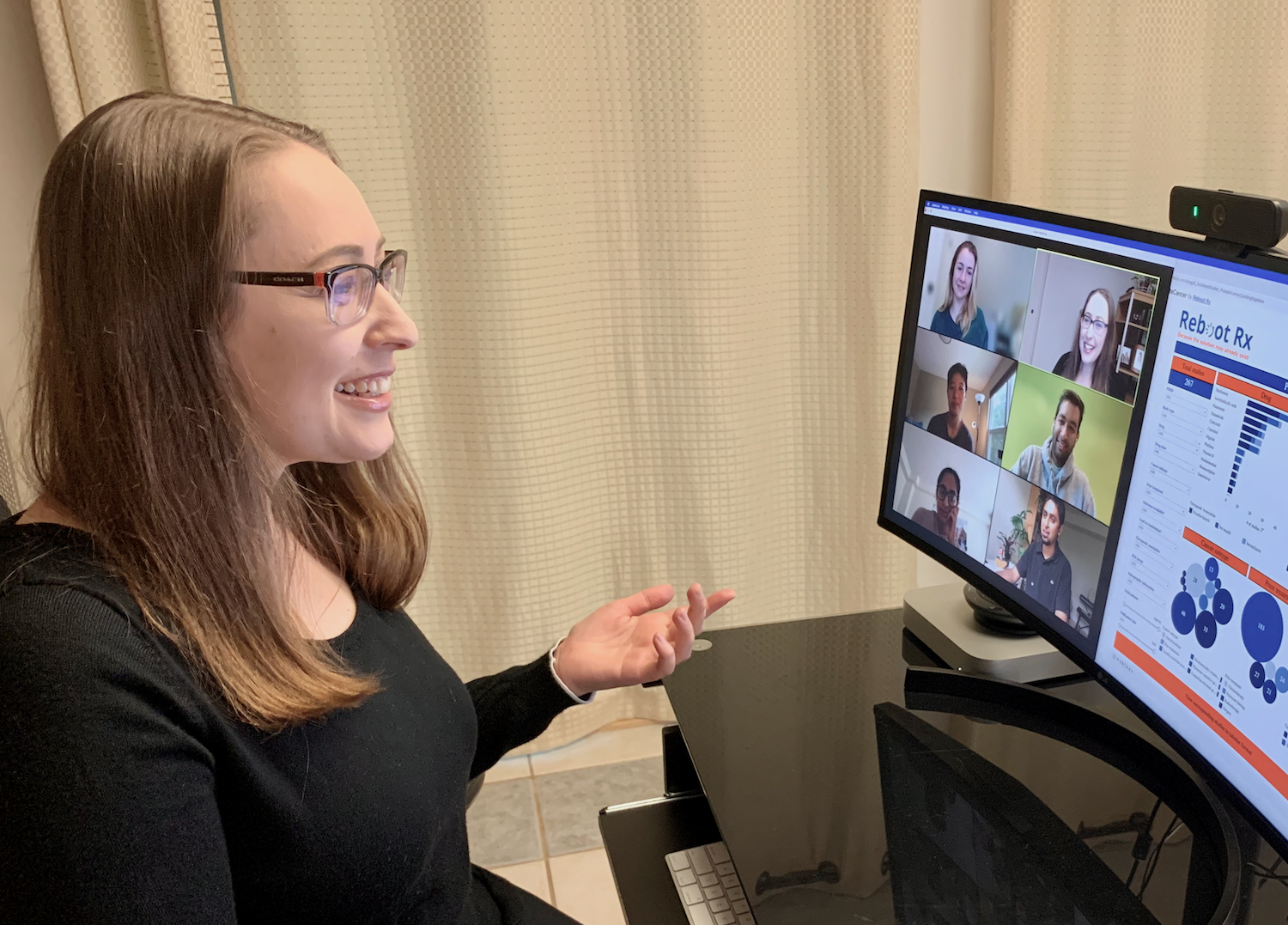
Making cancer treatments accessible
Scientific research is rapidly advancing thanks to AI. This trend holds in developing affordable cancer treatments. Pharmaceutical companies are typically more incentivized to develop new, high-revenue-generating drugs over more affordable options. This leads approximately 40 percent of Americans with cancer to exhaust their life savings within two years of diagnosis.
This harsh reality reveals an area of opportunity. Dr. Laura Kleiman, now founder and CEO of Reboot Rx, was a research center leader at the Dana-Farber Cancer Institute in Boston when her mother was diagnosed with cancer. The experience showed the potential to repurpose affordable generic drugs to treat certain types of cancer.
Bringing new cancer treatments to market tends to be a lengthy and expensive process. It often takes years and significant cost. Reboot Rx developed an AI tool to comb through thousands of published research studies to identify generic drugs suitable for cancer treatment. Without the use of AI and machine learning, this process would be manual and take years. But with machine learning, Reboot Rx brings the research timeframe down to mere weeks and substantially reduces costs.
An example is the FDA-approved drug Anastrozole to prevent breast cancer in postmenopausal women. While its initial purpose was to treat breast cancer for women who already have it, it was recently approved as a preventative measure by the United Kingdom’s Medicines and Healthcare Products Regulatory Agency. Now, thousands of women in the U.K. can get the treatment they need, potentially saving their lives and preventing them from going into medical debt.
Laura's experience, coupled with AI, has been key to unlocking this elegant, life-saving solution.
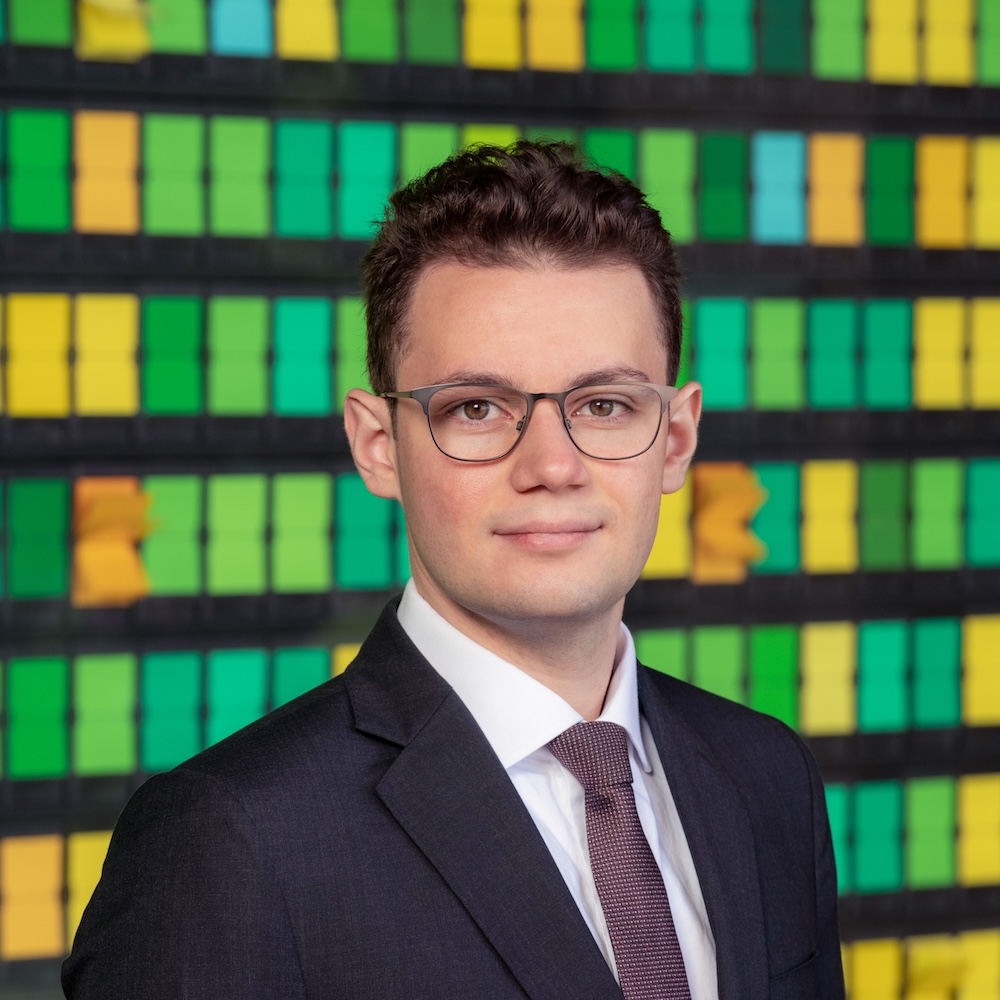
Enhancing learning for low-resourced students
Two-thirds of young people globally lack home internet access. That's 2.2 billion young minds missing out on learning opportunities that could profoundly shape their futures. This is a problem that Abdulhamid Haidar felt a deep calling to solve. Growing up as a middle-class kid from Syria, Abdulhamid's trajectory was unlikely. His father tutored him in math, and it paved his way to MIT, Harvard and Stanford. Abdulhamid recognized that not all young learners have the privilege of personalized math intervention, but most have access to text messaging and other social messaging platforms — which don’t always require internet access. He created Darsel so students in low-income countries could receive the same personalized and interactive math support he got as a child.
Darsel is a math-learning chatbot accessible via text message. Using AI, Darsel creates personalized curriculum by adapting content to each student’s levels. The chatbot provides hints and explanations that make learning math fun, while requiring less effort from teachers. It also bases its lessons on the local curriculum to keep students on track to meet their school requirements.
The chatbot is deployed in over 2,000 schools across countries like Jordan, India (Delhi) and Nigeria (Lagos). Local curricula differ in every region, so Darsel must personalize its learning algorithms to meet various standards. It does so by training the AI on proprietary content directly from the schools in these countries. Thanks to Abdulhamid's vision and AI, quality education is now just a text message away for countless learners.
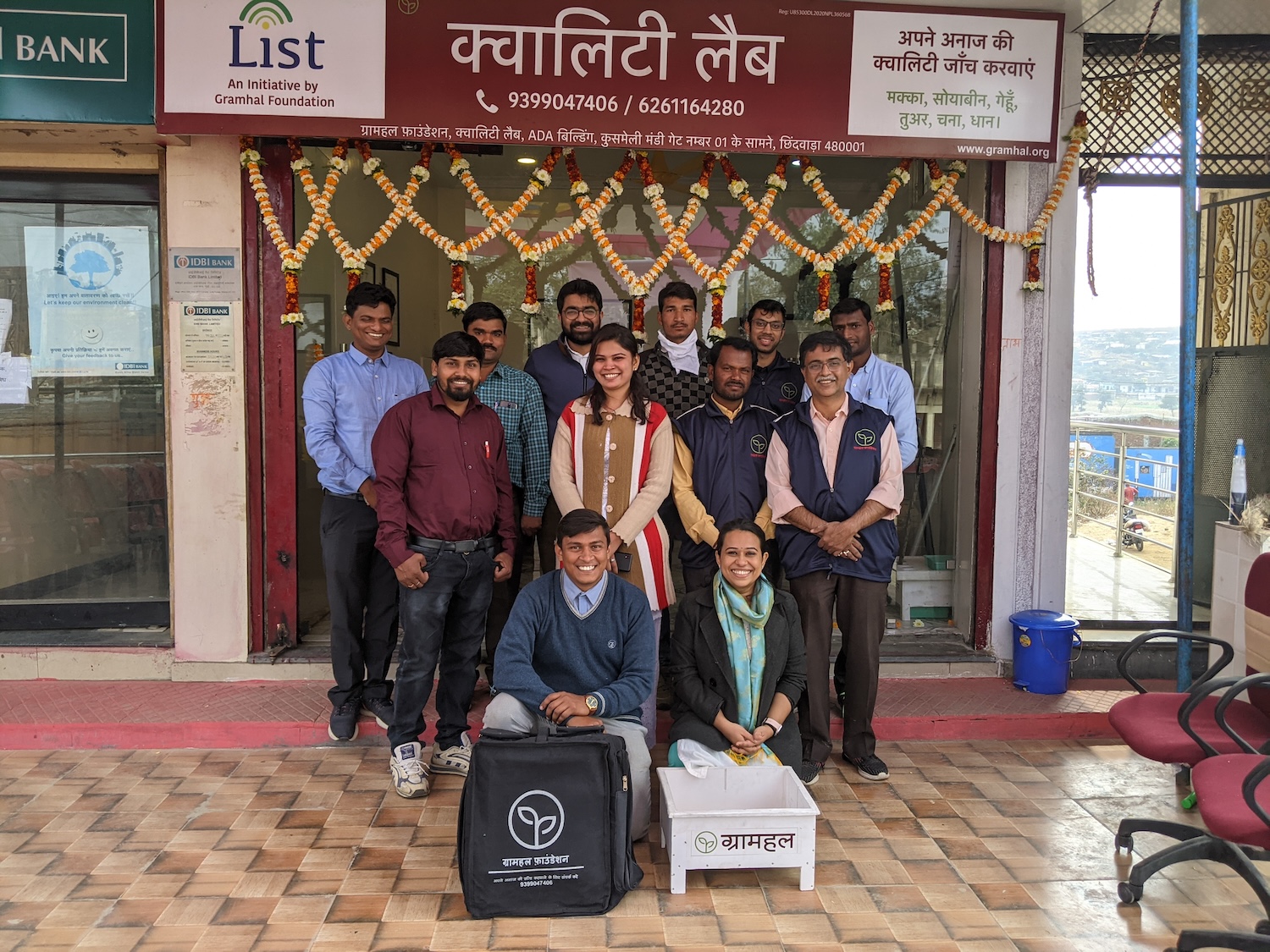
Improving the livelihoods of rural farmers
Achint Sanghi, co-founder and chief technology officer of Gramhal, grew up in Bengaluru, India. He was deeply disturbed by the onslaught of news about farmers facing crop losses due to climate change and the resulting deaths by suicide. The devastating epidemic is a harsh reality, with 30 farmers dying by suicide each day as of 2022 (there is an entire Wikipedia page dedicated to the topic). Achint believed that we could — and should — provide farmers with better agricultural information to curb this injustice.
He developed a solution. By pairing a WhatsApp chatbot with weather data, government agricultural data and crop price market intelligence, he unlocked access to good data that helps farmers increase their livelihoods and curb the effects of climate change at the same time.
The innovation doesn’t stop there. Using natural language processing (NLP), which is a computer’s ability to understand natural human language in written or spoken form, farmers can receive weather advisories in their local languages.
Gramhal’s newest innovation is an audio-based digital community knowledge platform called Matar. It allows farmers at various literacy levels to ask questions, and its AI generates answers which are validated by other farmers, resulting in a shared hub of knowledge. Using AI to scale the collective wisdom of the local community enables farmers to do their best work. Achint and his team at Gramhal are unlocking access to essential information to improve farmers' quality of life.
The imperative of supporting AI for humanity
These stories illustrate the importance of supporting the builders of AI for humanity. Philanthropists like Reid Hoffman, Google.org, the Patrick J. McGovern Foundation and Salesforce, which began exploring “AI for humanity” long before AI became mainstream, understand the value of supporting the builders. These AI-powered nonprofits wouldn’t have impacted as many lives as they have today without the support of these trailblazing philanthropists.
It’s clear that AI has the potential to exacerbate existing inequalities. But it also has the potential to scale solutions in ways we’ve never seen before. By supporting the good actors — the AI-powered nonprofit builders who are in a unique position to spearhead social impact with AI — we can meaningfully address the big problems we face across education, health, climate and more. Philanthropists are starting to pay attention to AI, but there is a need for more support. More funding will enable AI-powered nonprofits to build more, better and faster.
Editor's Note: This story was updated on February 5, 2024, to correct Dr. Laura Kleiman's title.